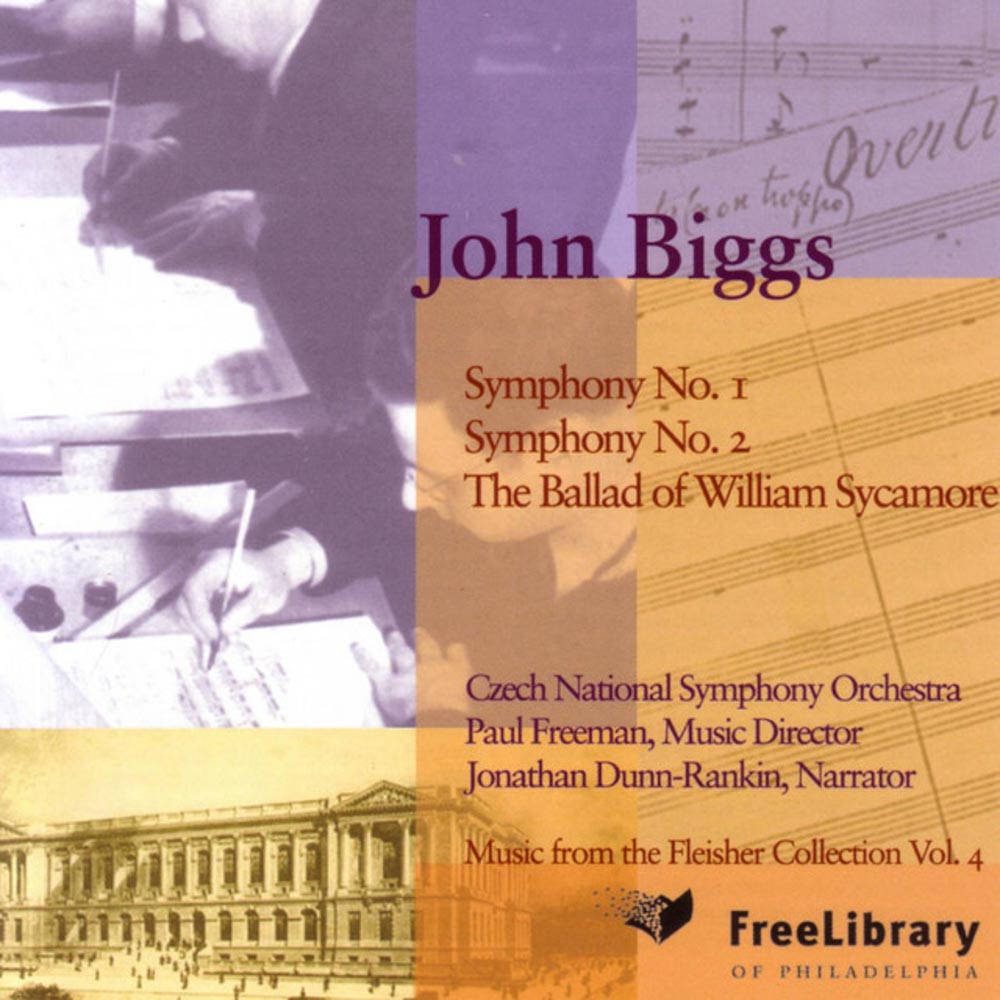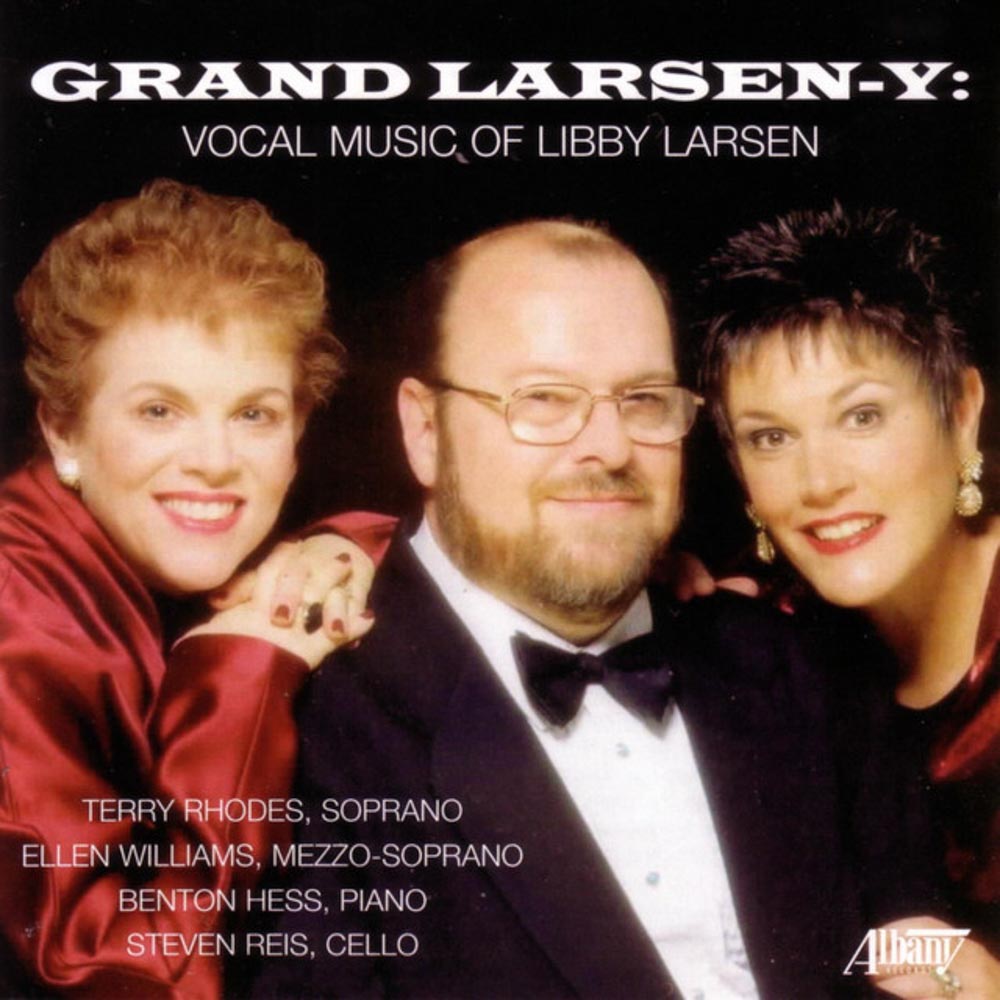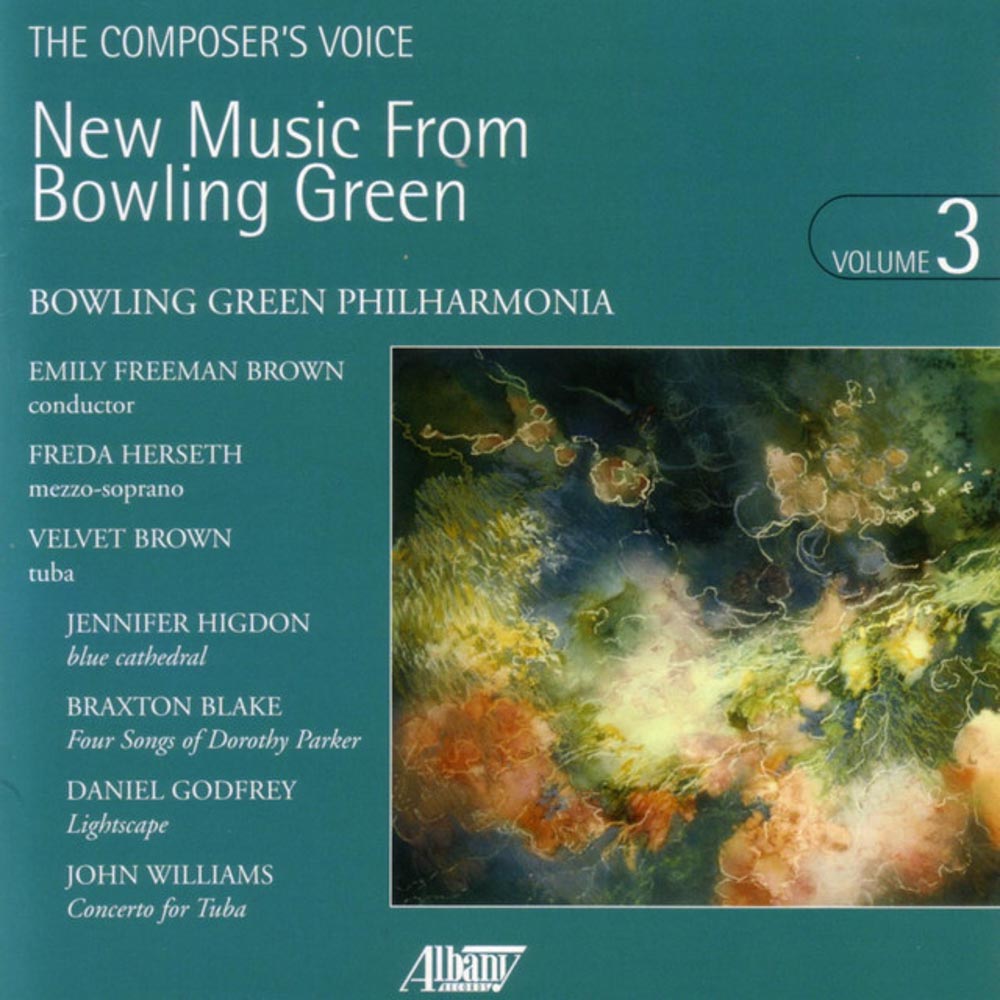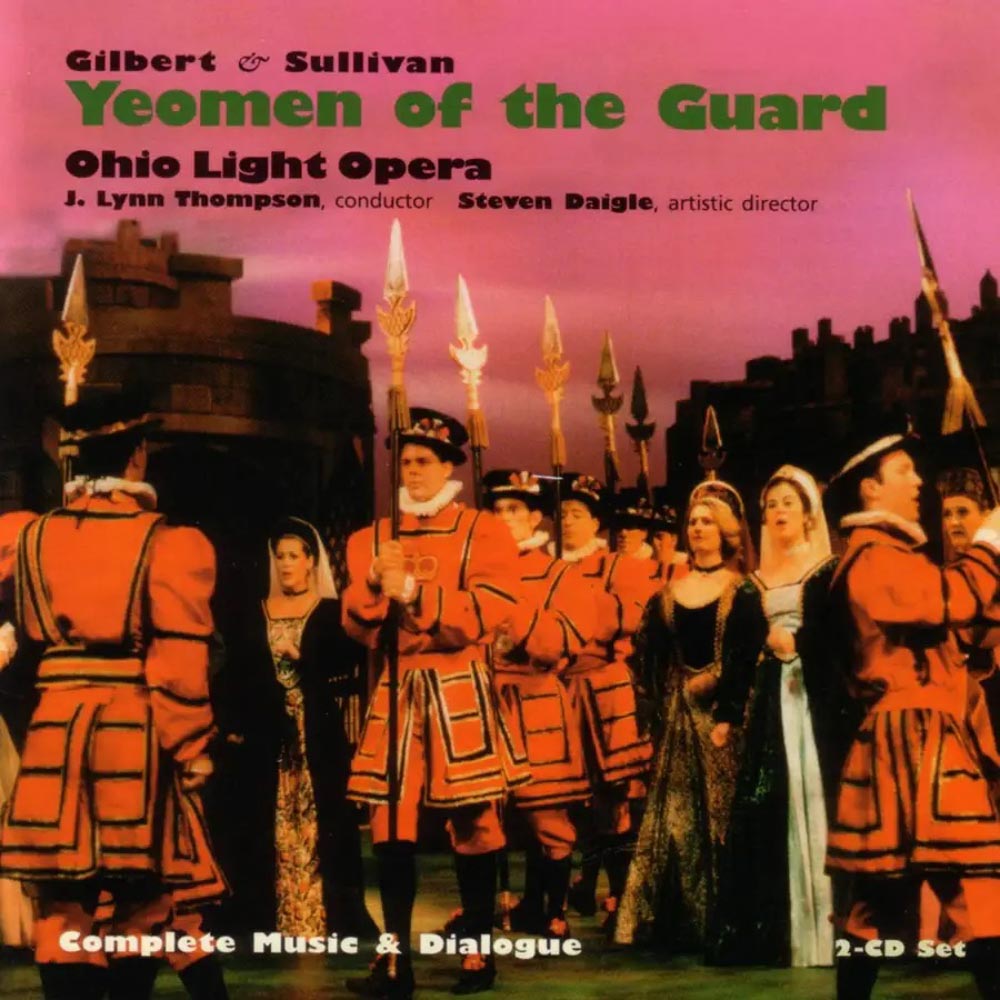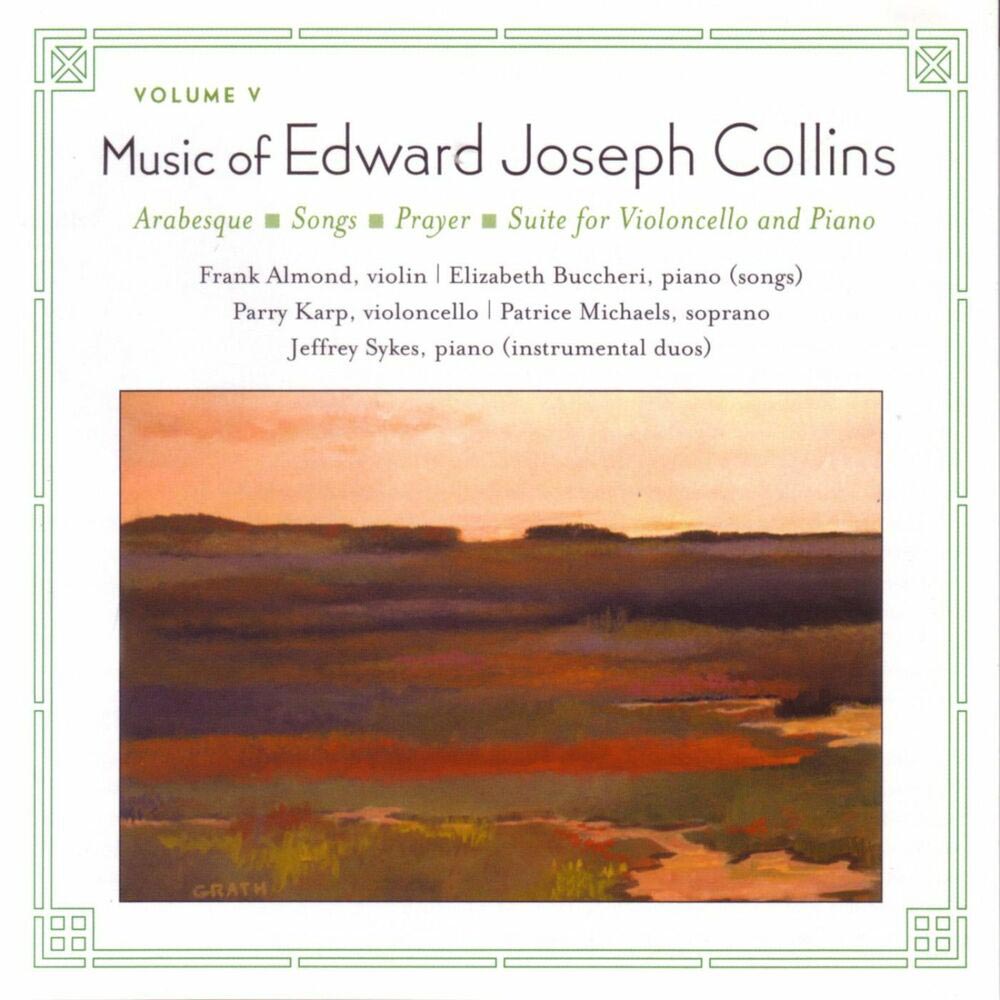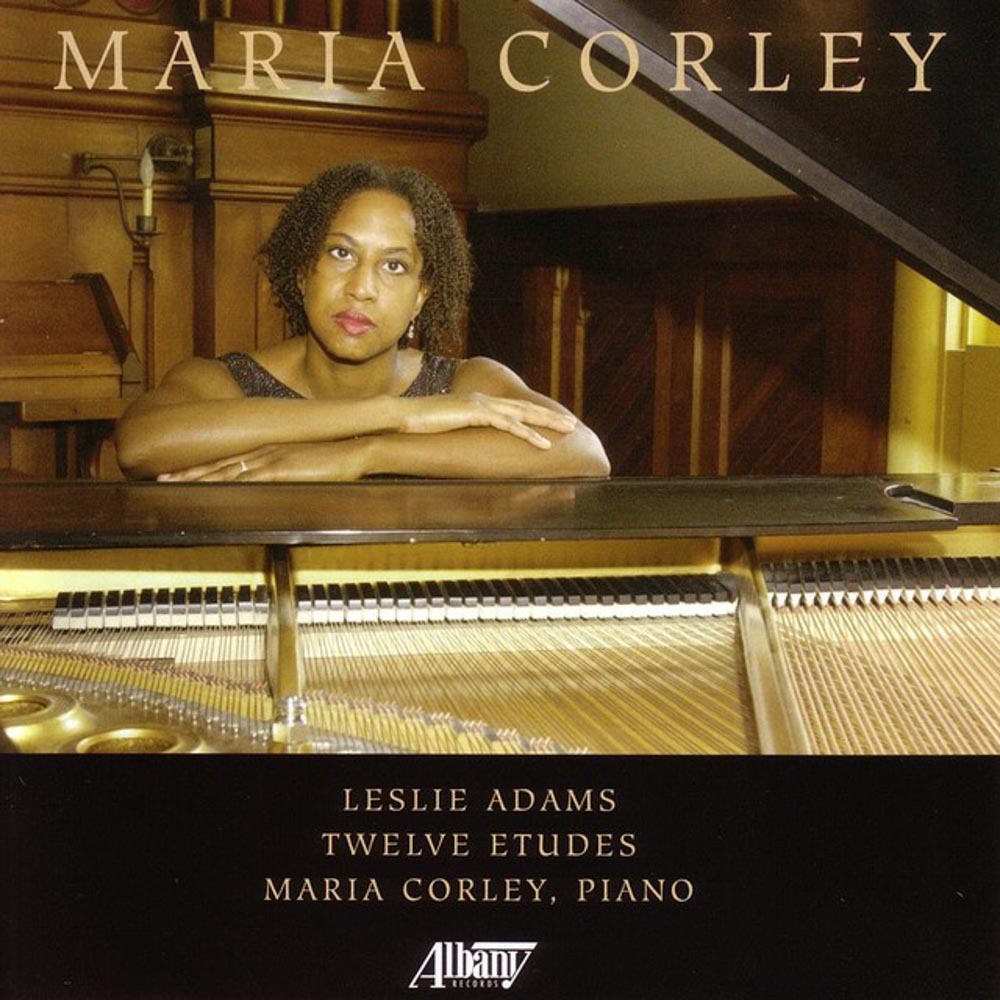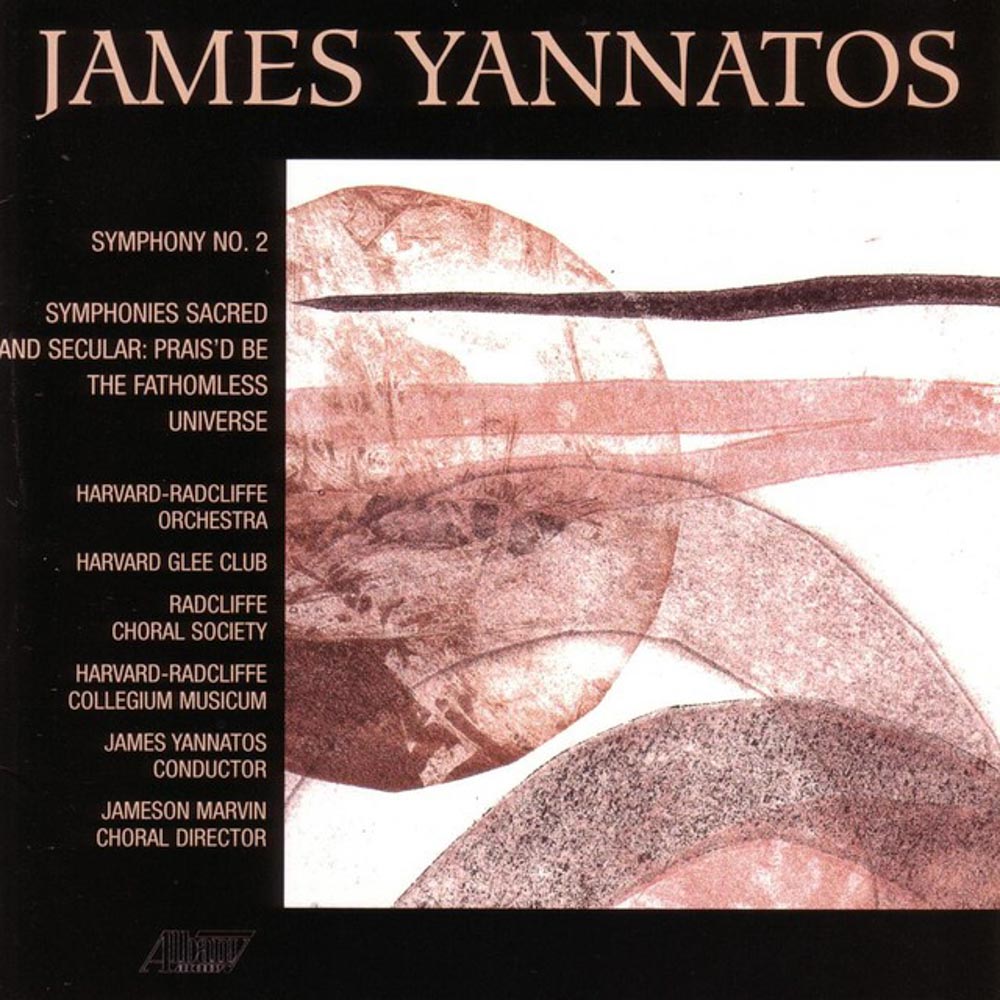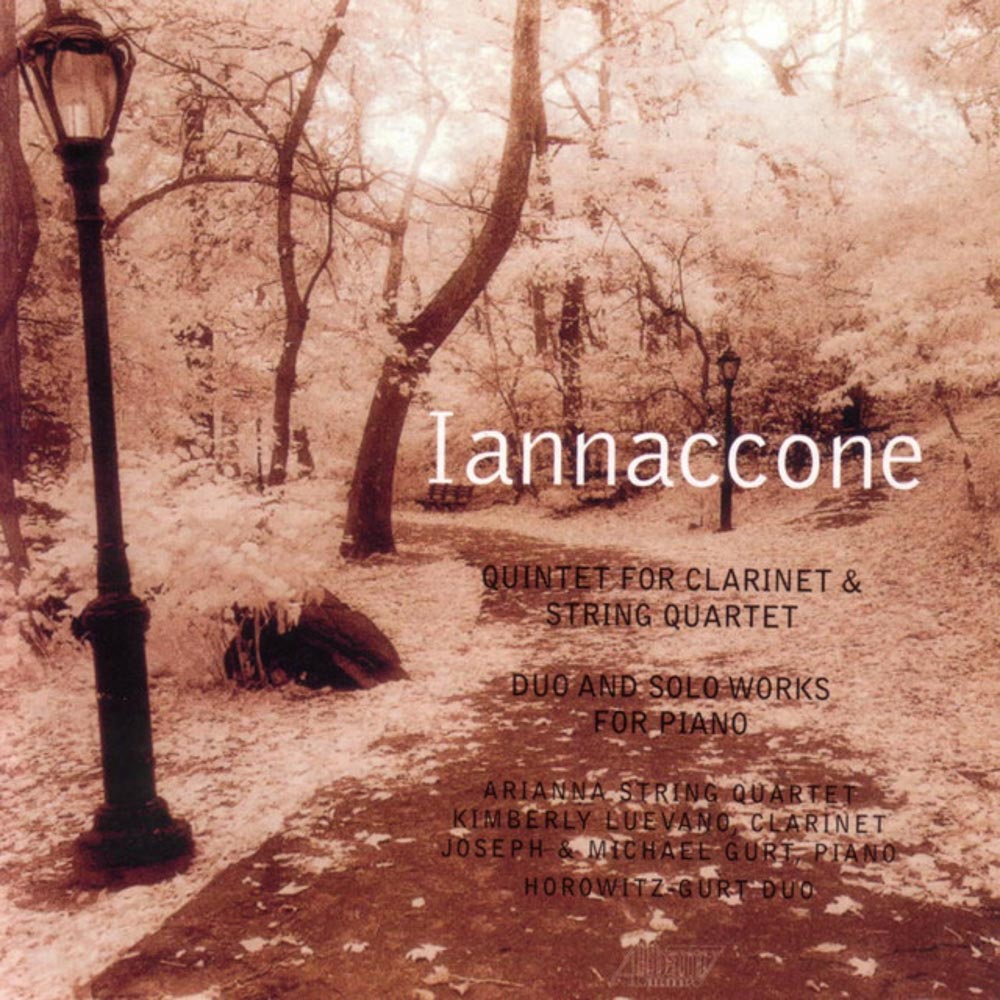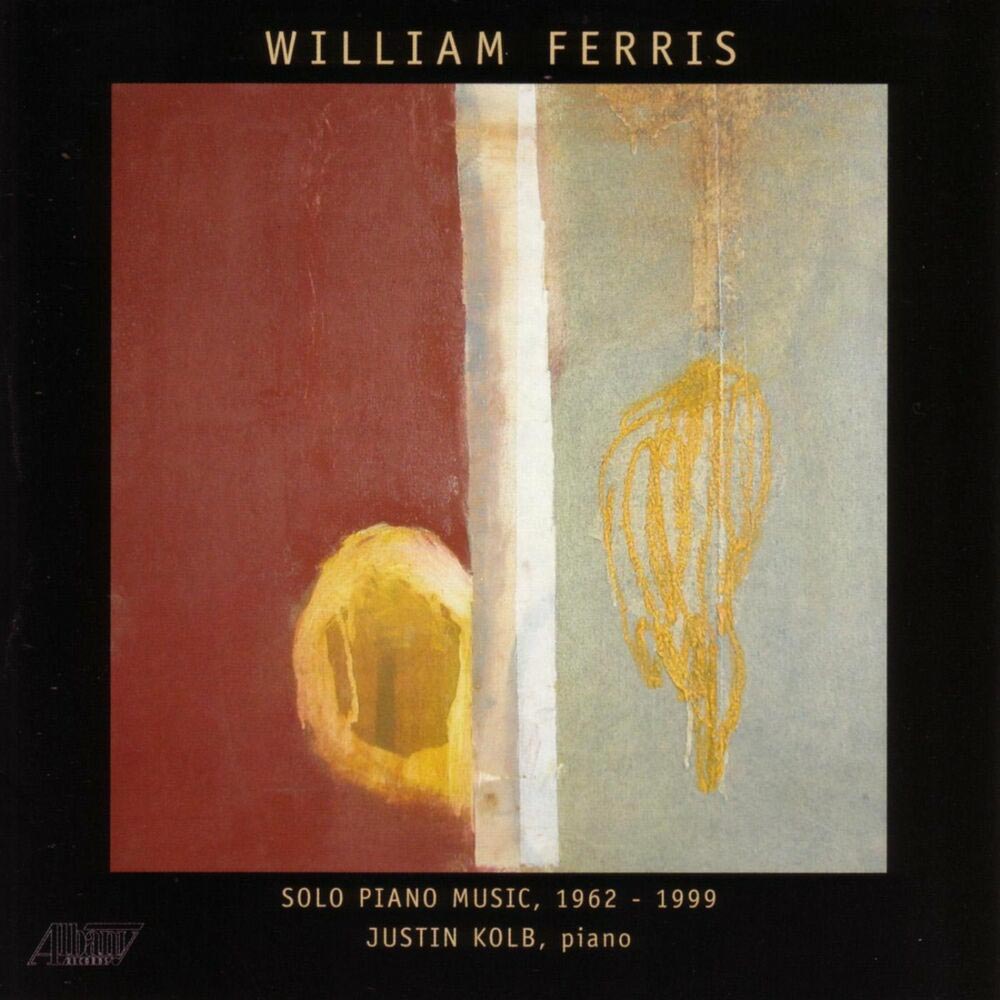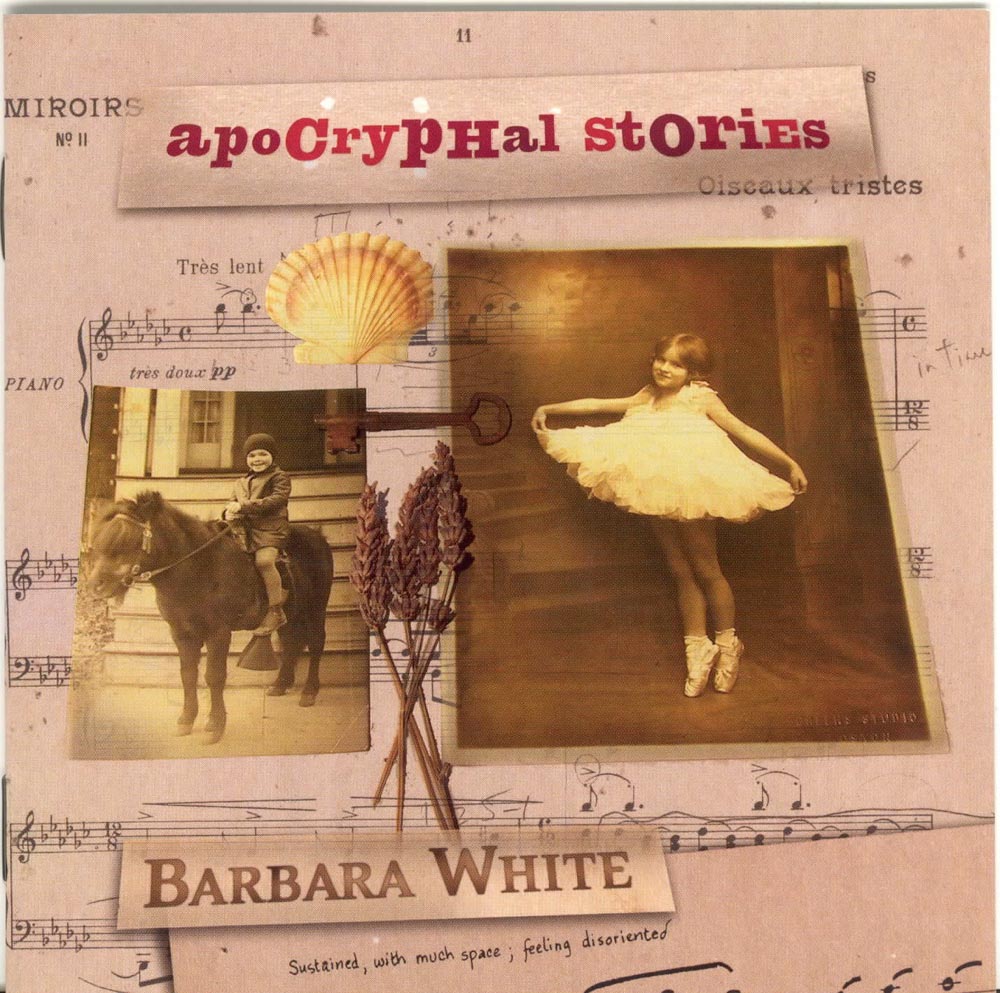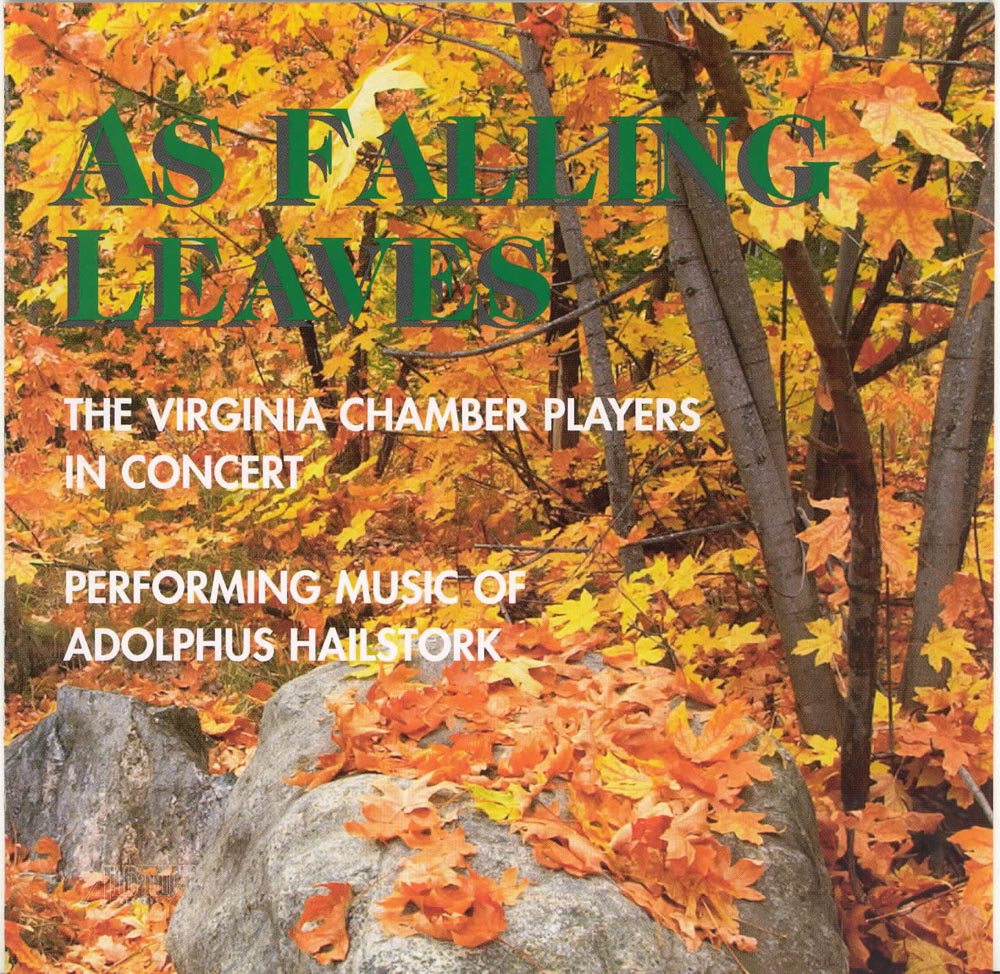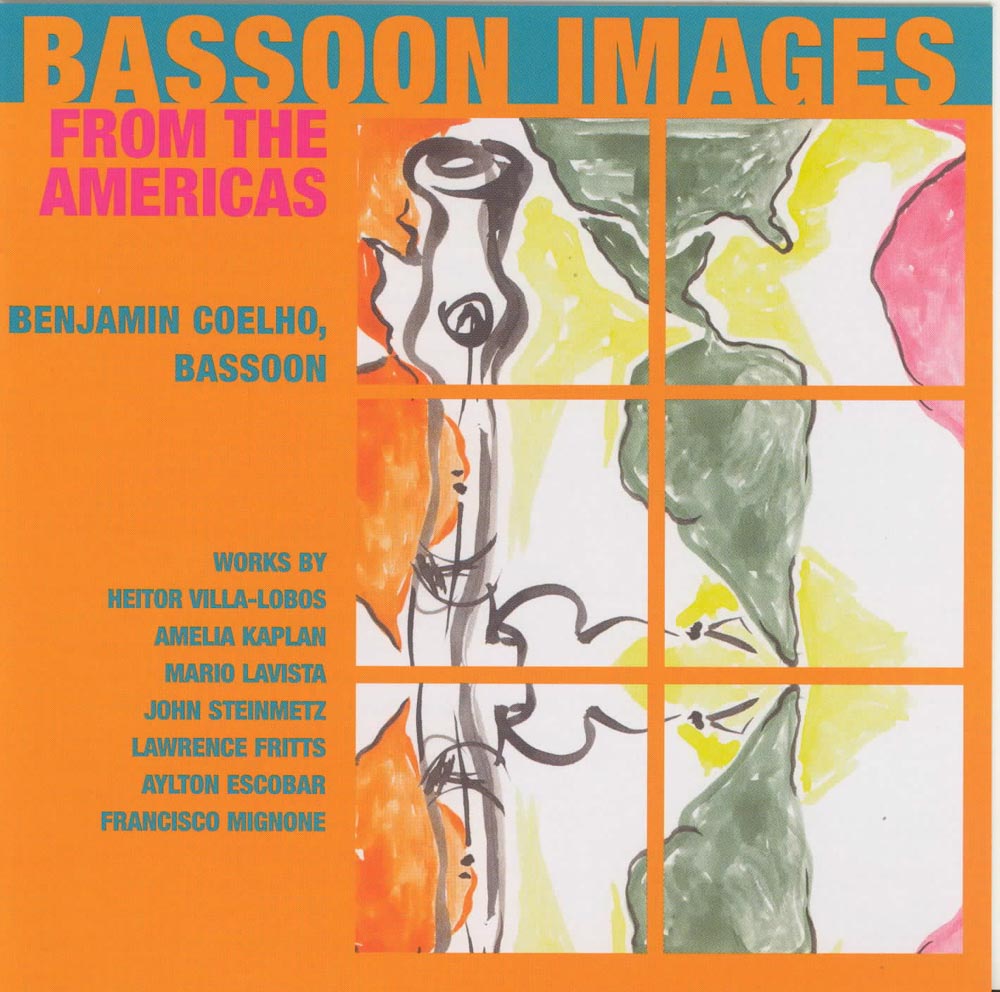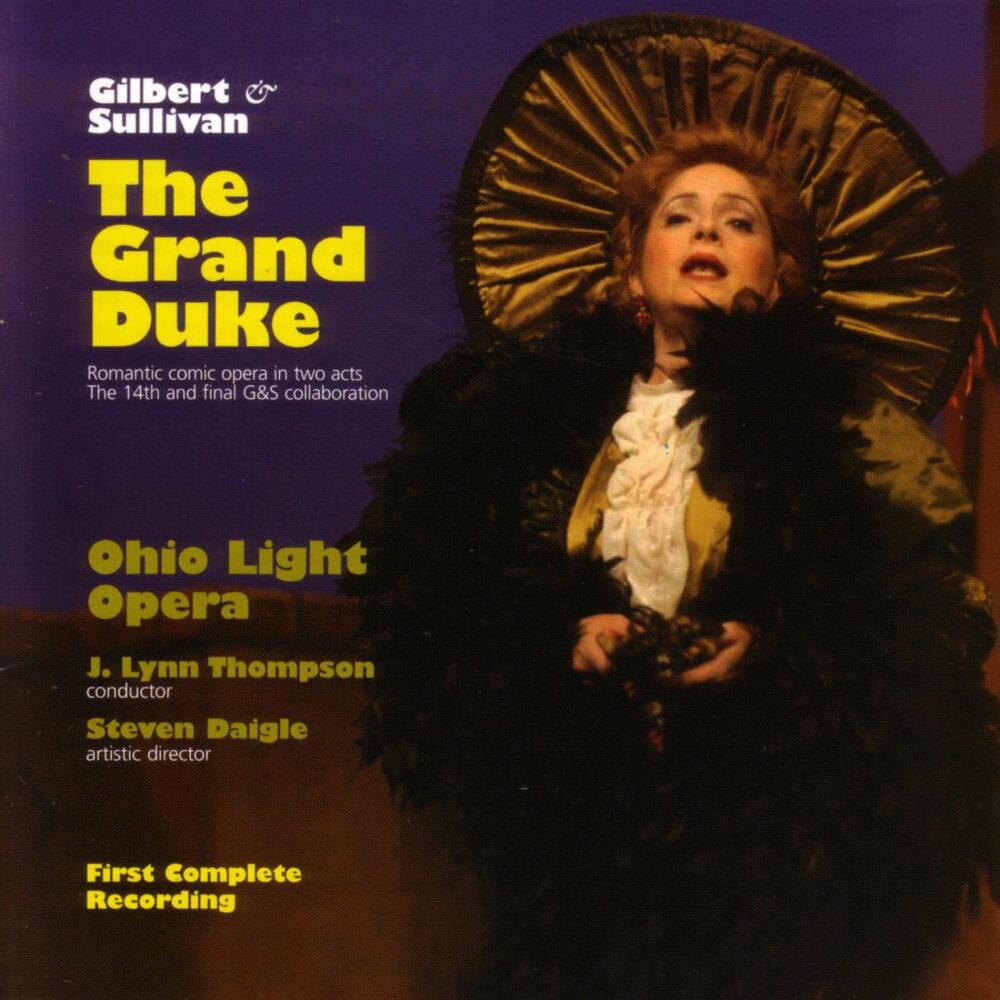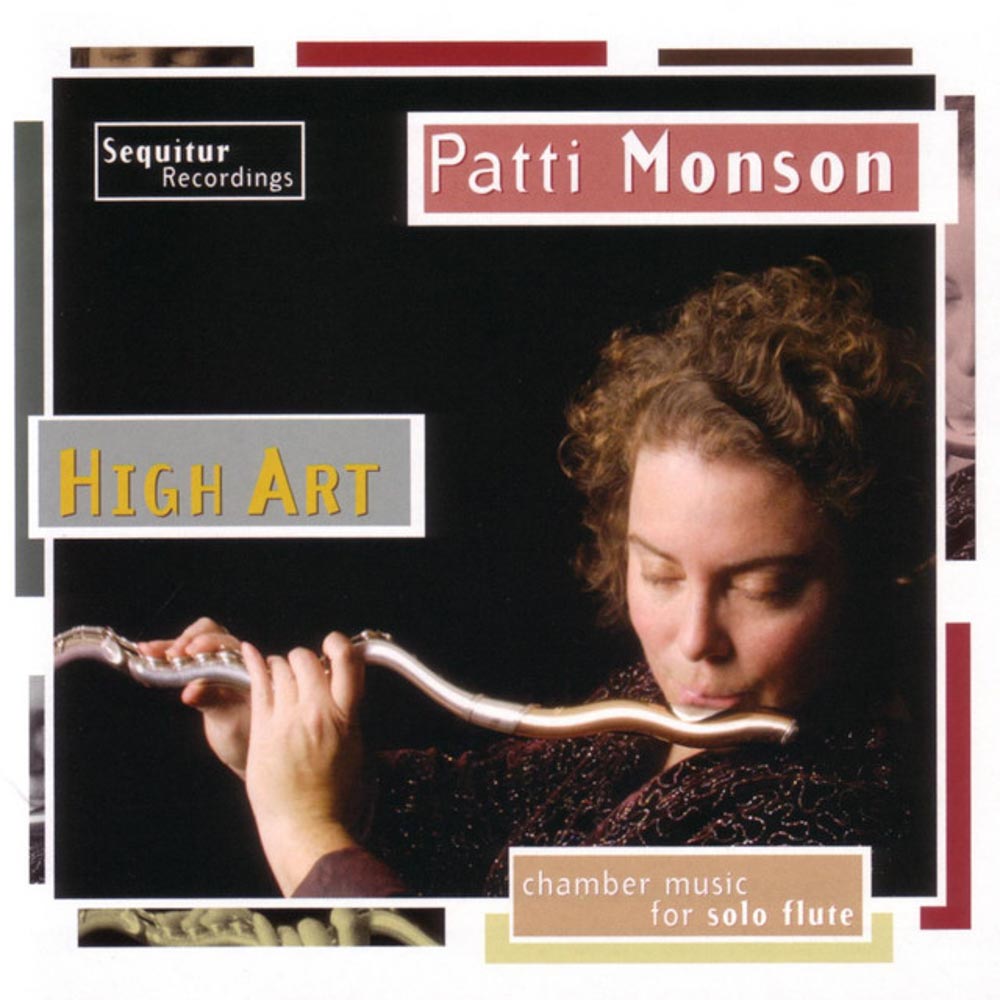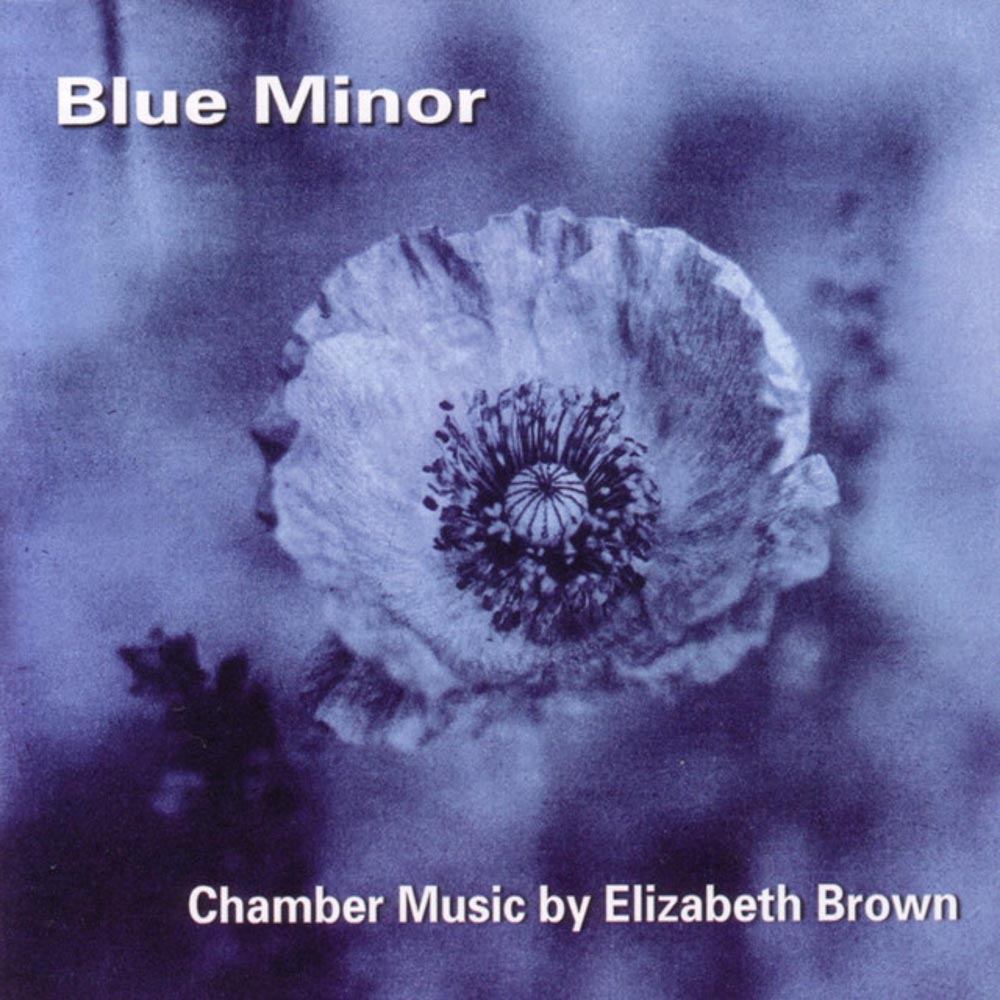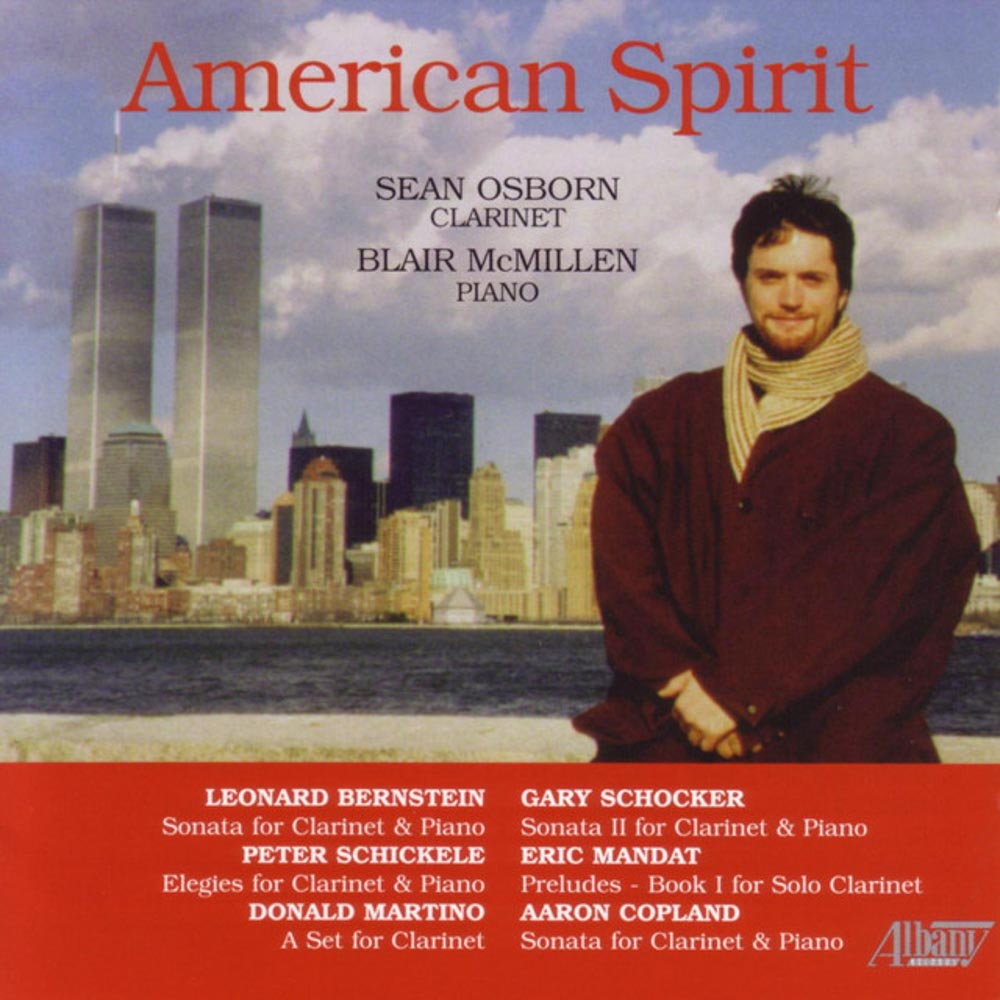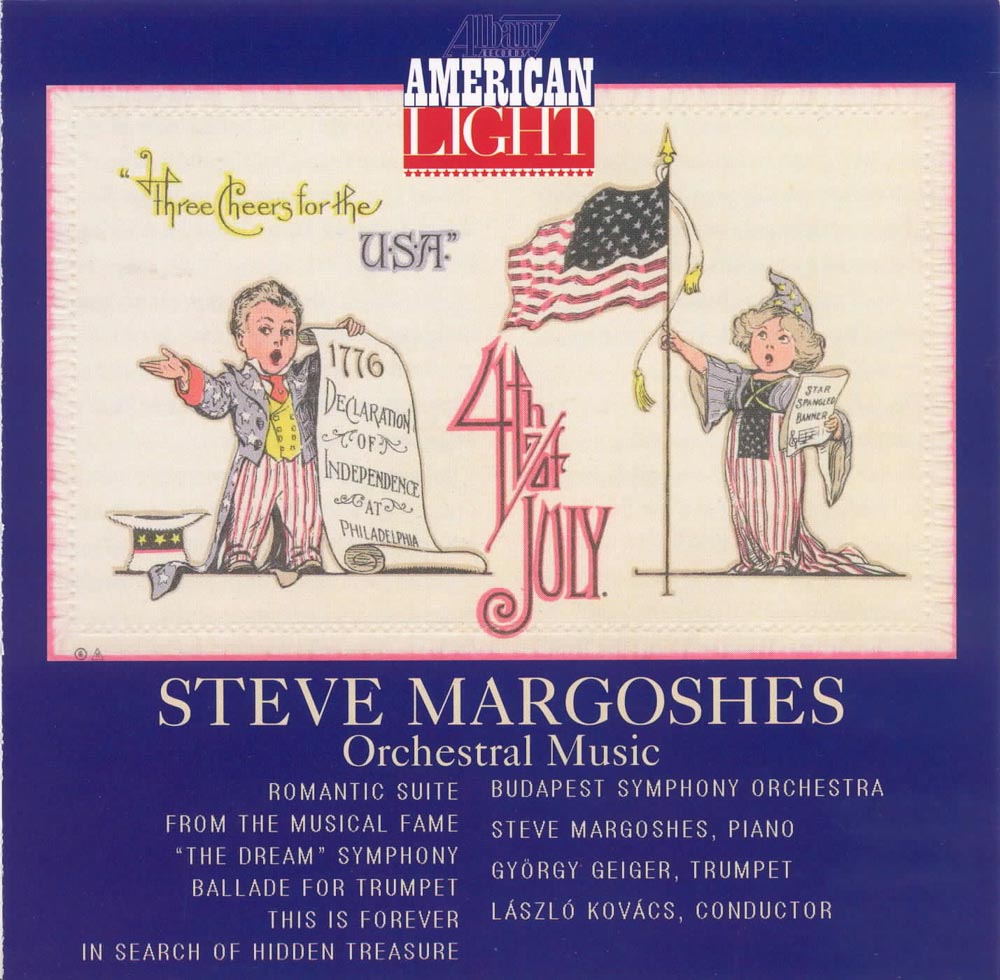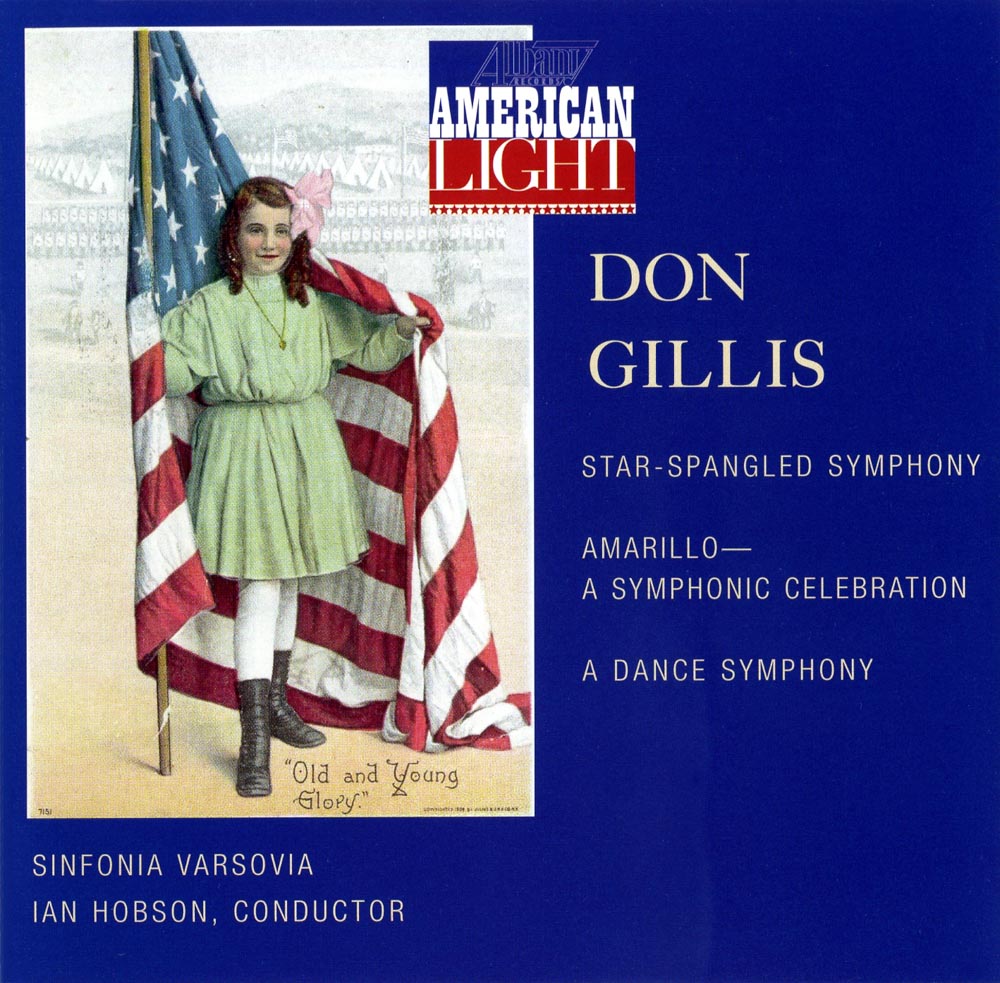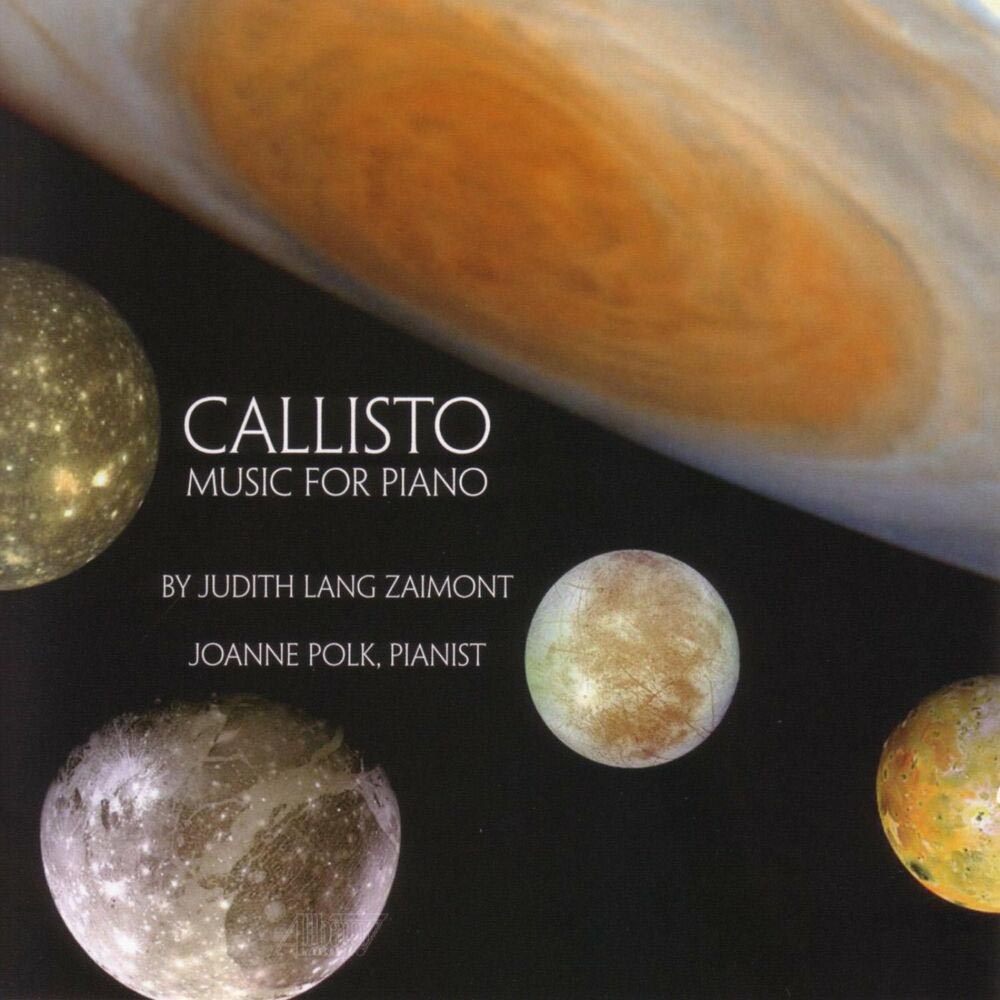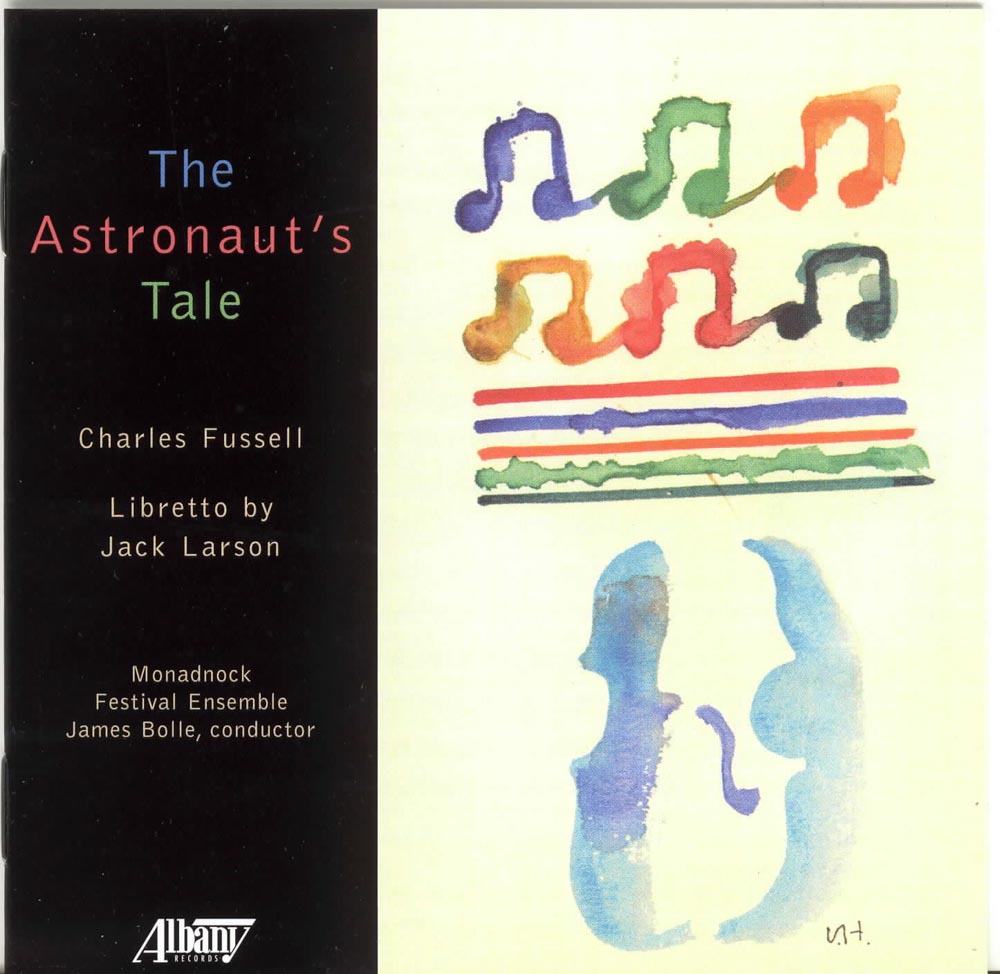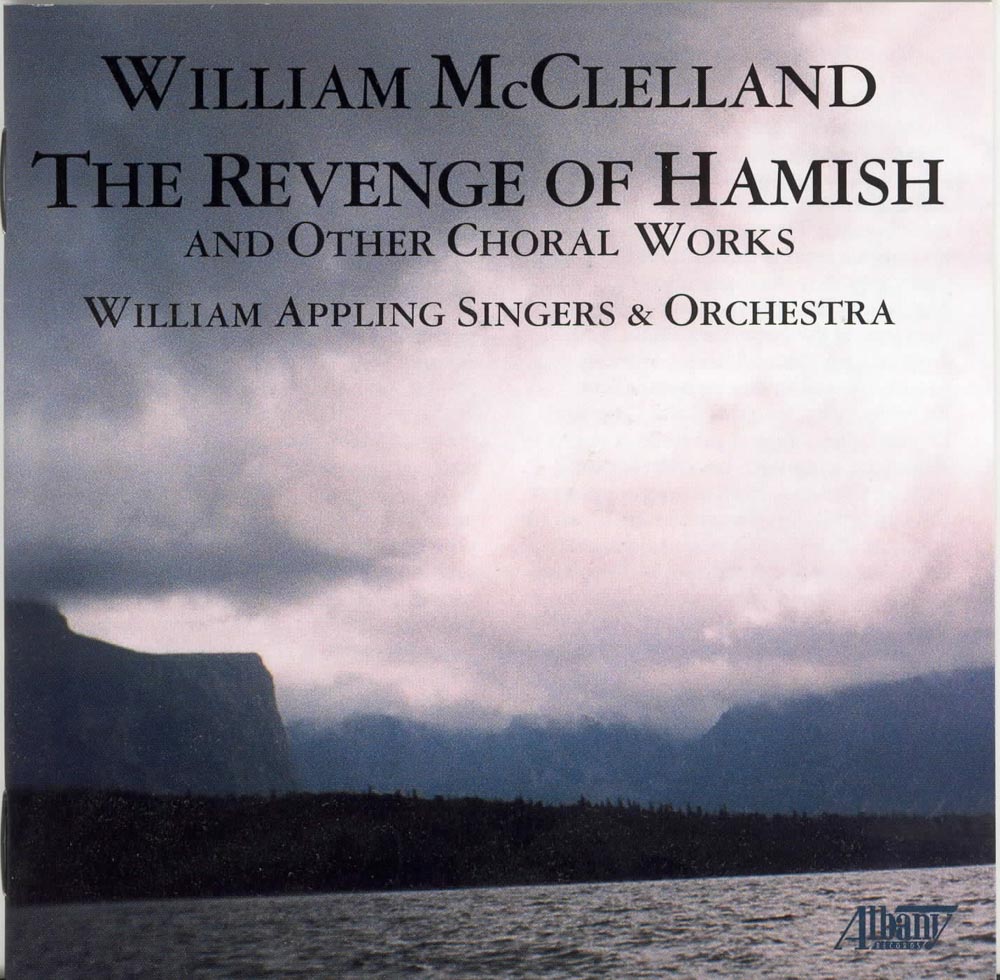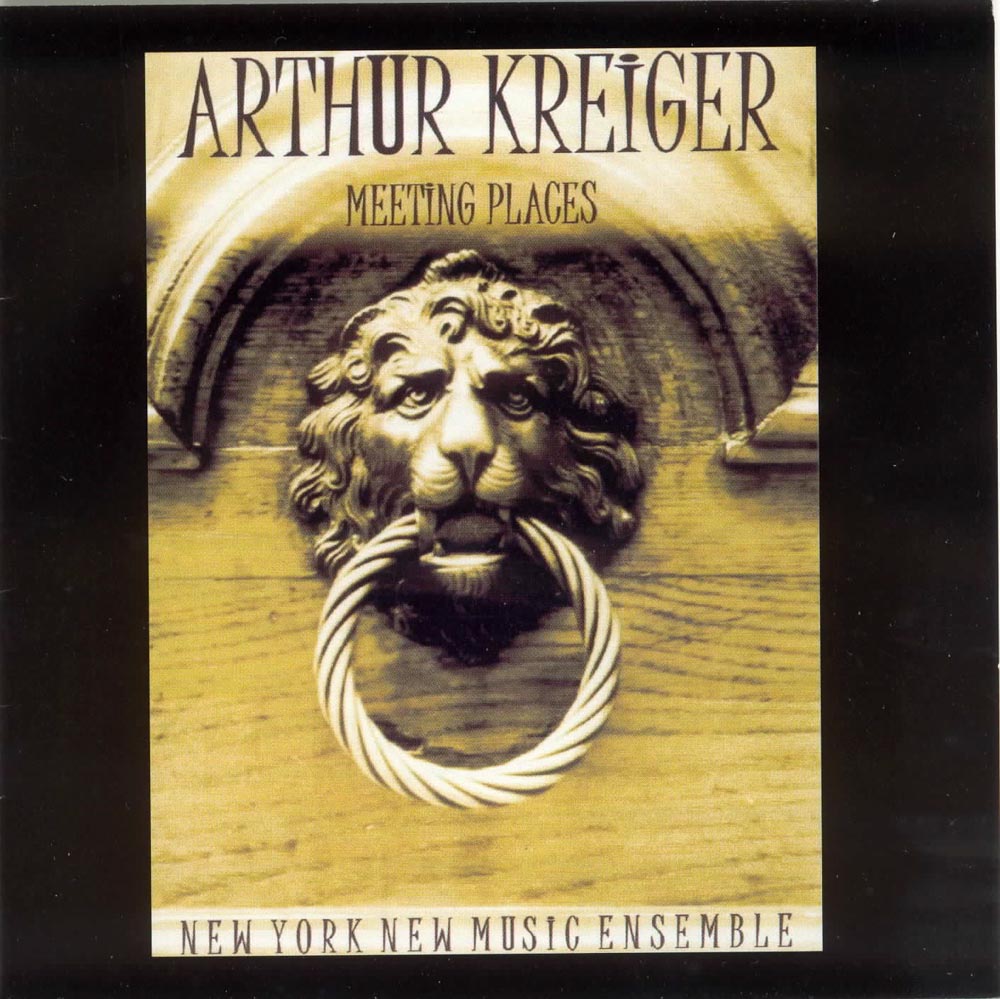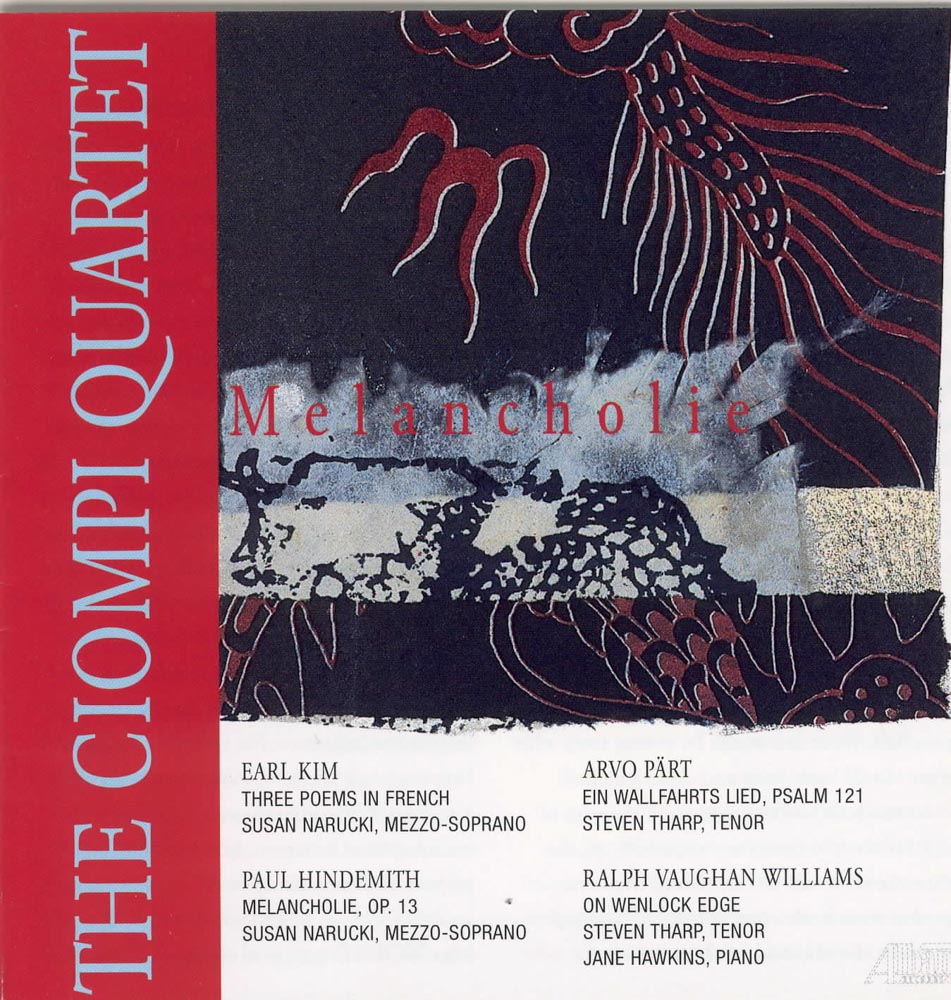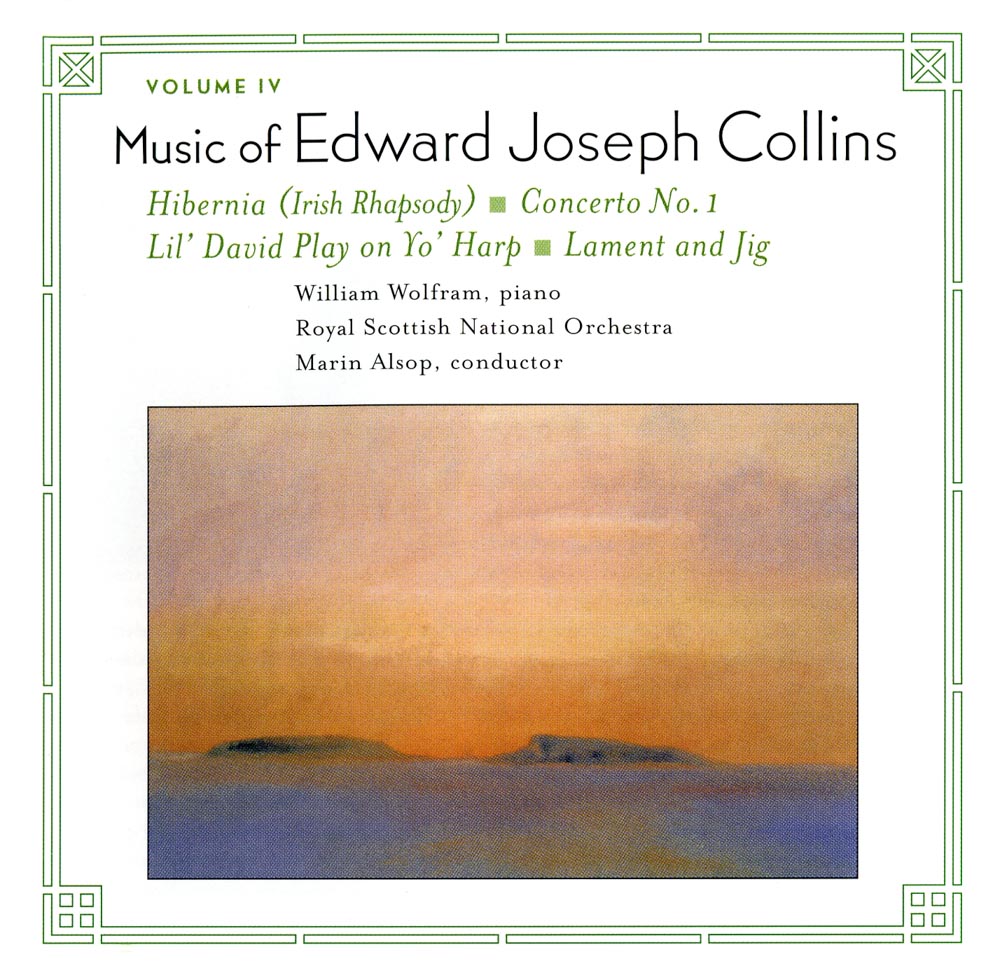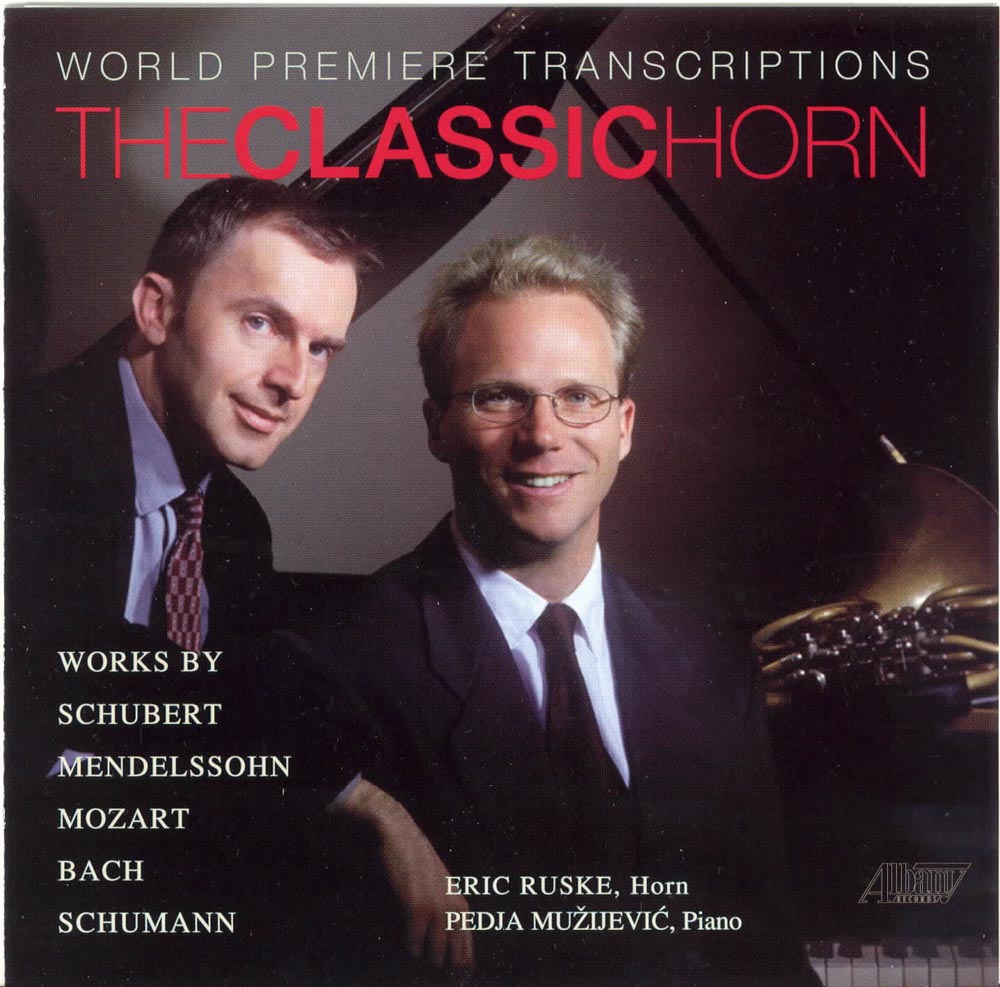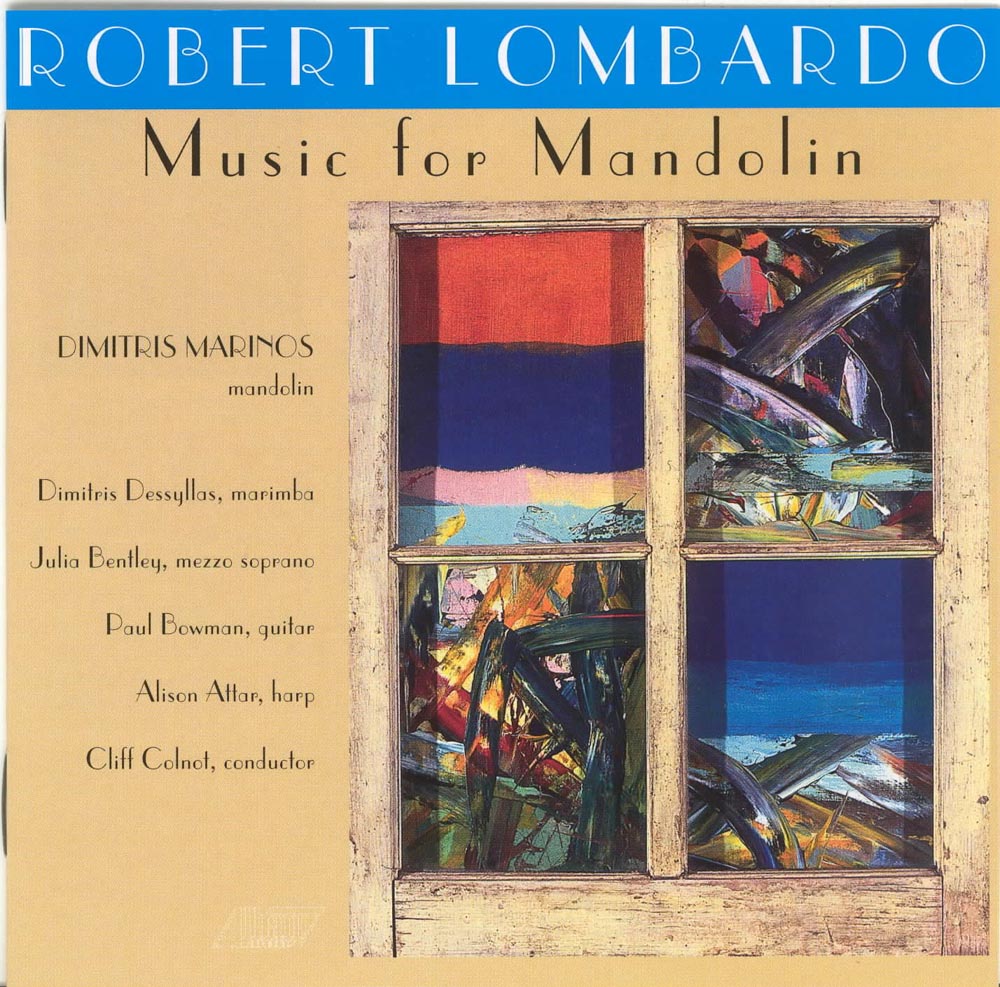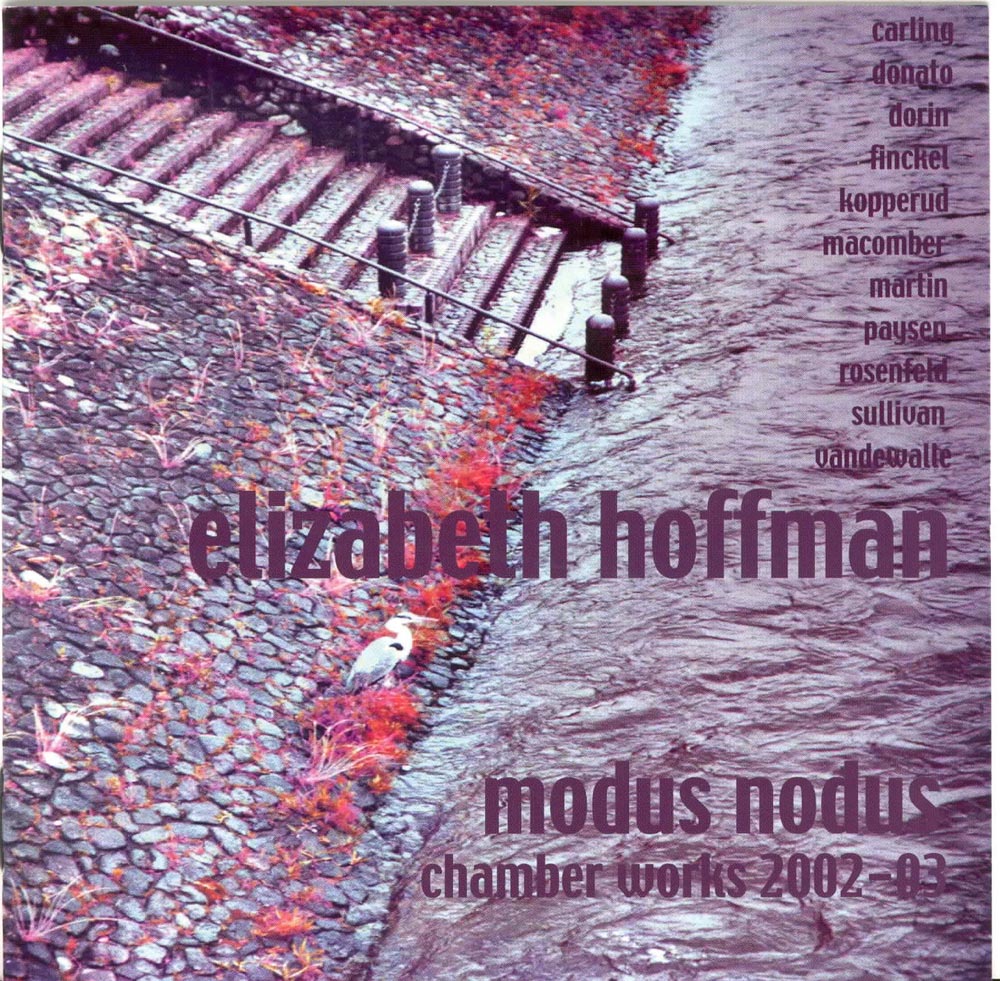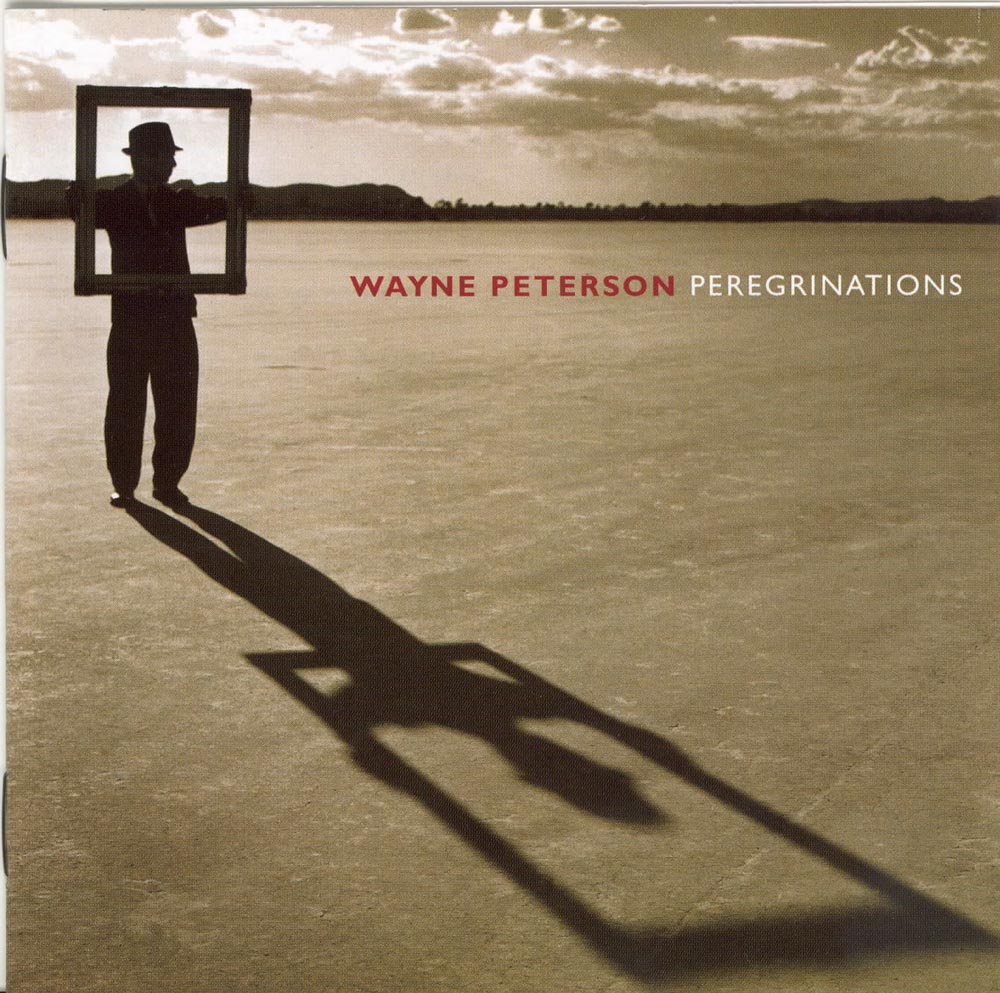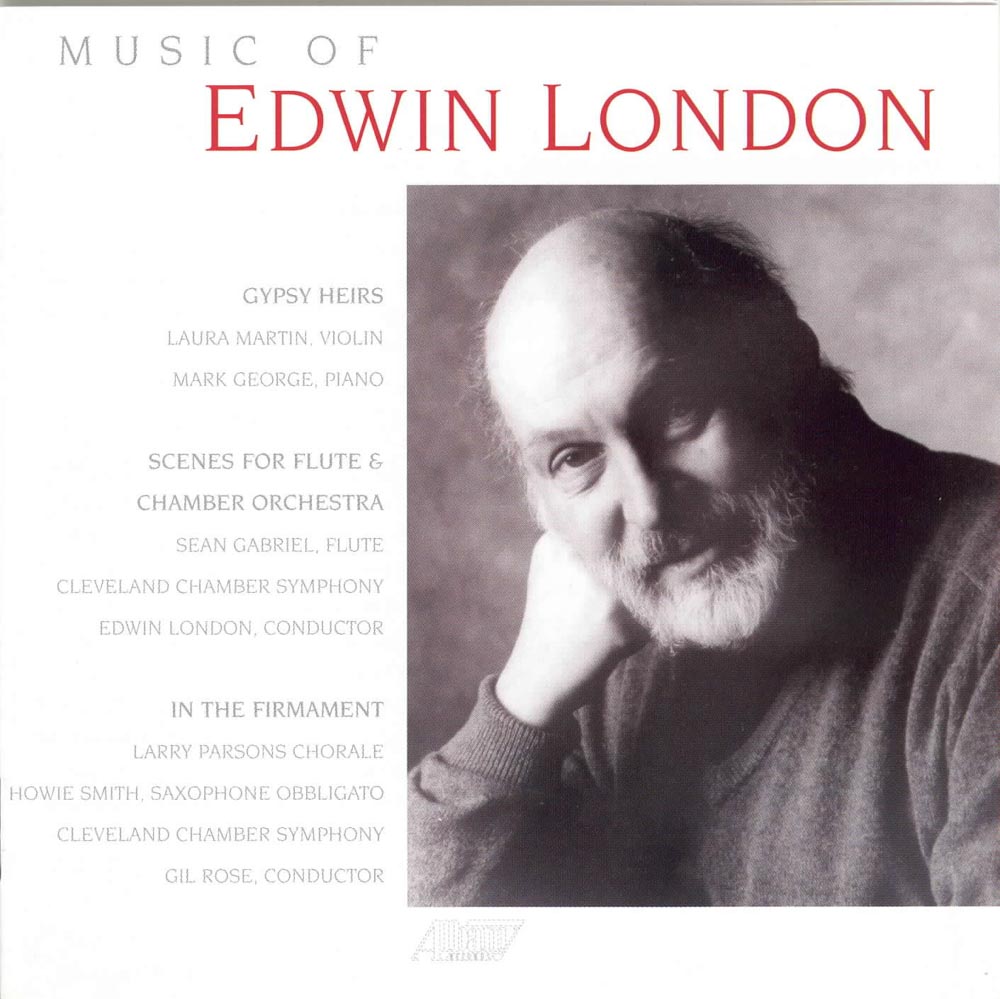Catalog #: TROY0635
Release Date: March 1, 2004OrchestralJohn Biggs was born in Los Angeles, the eighth of 11 children. His father was organist-composer Richard Keys Biggs and his mother was singer-conductor Lucienne Gourdon. During his youth he received training in acting, singing, piano, bassoon, and violin, and was a member of his father's church choir. He received his Masters Degree in composition from the University of California at Los Angeles, with further study at the University of Southern California and the Royal Flemish Academy in Antwerp, Belgium. His teachers were Roy Harris, Lukas Foss, Ingolf Dahl, Flor Peeters, and Halsey Stevens. "I received a Fulbright Grant in 1964 to study composition with Flor Peeters at the Royal Conservatory of Music in Antwerp, Belgium. I was 32, and eager to write a large work. I used October, November, and the first part of December to write the symphony. The premiere of the work took place on May 15, 1965, with me conducting the Antwerp Philharmonic. My Symphony No. 2 was commissioned by the York Symphony of York, Pennsylvania and premiered on April 26, 1992, with Robert Hart Baker conducting. While attending a concert at the University of Southern California in 1958, I heard a composition by Halsey Stevens based on the epic poem The Ballad of William Sycamore by Stephen Vincent Benet. I was so moved by the music, and especially by the text, that I decided I would someday set the very same poem. The opportunity came 36 years later, when I was commissioned by the New West Symphony of Ventura County, California, to compose a piece for the opening of their inaugural season. The premiere took place on October 6th and 7th , 1995. The conductor was Boris Brott, and the narrator was Michael Gallup."
Catalog #: TROY0634
Release Date: March 1, 2004VocalTerry Rhodes and Ellen Williams write: "Long having been fans of the music of Libby Larsen, we were thrilled to learn that this renowned and prolific composer would be among us in residency at Meredith College for a week in March 2002. And what a tremendous week it was - with Libby coaching young women composers who had gathered from all over the country! Libby epitomizes generosity of spirit. She not only shared her thorough understanding of composition and the realities of the music business, but also her unbounded passion for vocal music. After this wonderfully inspiring time together, we all decided to collaborate on a CD together. Longtime friend and valued colleague, Benton Hess, also had agreed to participate in this project. The summer of 2002 followed, with continuing dialogue among us all, as we researched and finally selected the appropriate repertoire. Autumn 2002, found us readying for a series of recitals of this program to perform in the spring of 2003. The process culminated in several illuminating days in New York City when we had the great fortune to work with Libby herself on her music. As we sang through the program, Libby shared her intentions for each piece, affirming what we had accomplished thus far, but also encouraging and inspiring us to discover that "next level," to really find the essence of each song. What a gift! We finally recorded on May 12, 13, 15 and 16, in Baldwin Auditorium on the Duke University campus in Durham, North Carolina. We'll continue to perform these wonderful songs with great joy and commitment, and we offer our very special thanks to Libby Larsen for creating such distinctive, humorous, heartwarming and honest music."
Catalog #: TROY0633
Release Date: March 1, 2004OrchestralAbout her piece blue cathedral Jennifer Higdon writes: "Blue...like the sky. Where all possibilities soar. Cathedrals...a place of thought, growth, spiritual expression...serving as a symbolic doorway into and out of this world. Cathedrals represent a place of beginnings, endings, solitude, fellowship, contemplation, knowledge and growth. These were my thoughts when the Curtis Institute of Music (where she teaches) commissioned me to write a work to commemorate its 75th anniversary. Curtis is a house of knowledge - a place to reach towards that beautiful expression of the soul which comes through music. Coming to the writing of this piece at a unique juncture in my life, I found myself pondering the question of what makes a life. The recent loss of my younger brother, Andrew Blue, made me reflect on the amazing journeys that we all make, especially at Curtis, where the pursuit of "the singing soul" is what music and life are all about. This piece represents the expression of the individual and the whole of the group...our journeys and the places our souls carry us." Braxton Blake studied composition with Samuel Adler, Warren Benson and Joseph Schwantner at Eastman, where he also served as director of the school's Musica Nova ensemble. He has also studied at the Bayreuth Festival, the Dartington Festival and the Staatliche Musikhochschule in Stuttgart, Germany. "In composing these songs, I decided to mirror the directness of Dorothy Parker's poetry in my music. I enjoy composing in a variety of styles, and it seemed appropriate to borrow just a bit from Parker's era, as will be immediately clear to the listener. These songs are cabaret songs - though not specifically meant for a cabaret. Like many cabaret songs, they are narrative scenes, all with contrasting music." Daniel S. Godfrey earned bachelor's and master's degrees in composition from Yale University and a Ph.D from the University of Iowa. He is professor of music in the Setnor School of Music at Syracuse University and has held visiting faculty appointments at the Indiana University School of Music, the Eastman School of Music and the University of Pittsburgh. "Lightscape was commissioned for and premiered by the Syracuse Symphony Orchestra in 1997. The idea of light in this work is abstract, having as much to do with 'inner' as outer light. The concluding measures, however, do have an external source: the deep glow and fade of sunsets among the islands of the mid-coast Maine. The high-point of the piece reflects a line in the Rig Veda (with which the score is inscribed): "May we soar like birds, far beyond the sun, blazing with Thy light." About his Tuba Concerto John Williams writes: "I really don't know why I wrote it - just urge and instinct. I've always liked the tuba and even used to play it a little. I wrote a big tuba solo for a Dick Van Dyke movie called Fitzwilly and ever since I've kept composing for it - it's such an agile instrument, like a huge cornet. I've also put passages in for some of my pets in the orchestra - solos for the flute and English horn, for the horn quartet and a trio of trumpets. It's light and tuneful and I hope it has enough events in it to make it fun."
Catalog #: TROY0643-44
Release Date: February 1, 2004OperaSince establishing Ohio Light Opera in 1979, The College of Wooster has upheld the goals of providing young musicians with an opportunity to perform in a professional setting and of entertaining audiences with operettas which have charmed the publics of an earlier era. Liberal arts colleges are, in the words of President R. Stanton Hales, "national treasures which have provided the ideals for American undergraduate education." Of these small and independent treasures, Wooster is one of the brightest. A recent study measured the leading 50 colleges in three critical areas Ð educating scientists, educating leaders in international affairs, and educating business executives. Wooster is only one of 21 colleges to earn a place in all three groups. It is also a school that is dedicated to the performing arts with strong programs in theater and music. Steven Daigle, the artistic director for the company says: "The Ohio Light Opera Company is happy to offer Gilbert and Sullivan's The Yeomen of the Guard. No other festival here or abroad can boast a company that has dedicated itself for 25 years to the preservation and traditional presentation of all forms of opera. This "operetta haven," supported by the Wooster community has set a unique standard to which many performing arts companies aspire."
Catalog #: TROY0641
Release Date: February 1, 2004ChamberThis is the first recording of Collin's songs and instrumental duos, including the 1933 Suite for Violoncello and Piano, a major addition to the repertoire for this combination of instruments. Born in Joliet, Illinois, Collins studied piano with Ganz in Chicago and composition with Bruch and Humperdinck in Europe. A 1912 Berlin debut and subsequent concerts in the USA and Europe earned strong critical praise. Collins was hired as an assistant conductor for the Bayreuth Festival in 1914; that engagement was ended by World War I and service in the US Army. After the War, Collins began a teaching career in Chicago, continuing to conduct, perform and compose. His music attracted the attention of Chicago Symphony Orchestra Music Director Frederick Stock, who conducted many of Collins's orchestral compositions. Those include a symphony, three piano concerti, and a secular cantata. Collins also composed dozens of songs, piano solo works and other chamber music. The songs presented on this CD were composed between 1917 and 1944. As a former opera house assistant conductor at New York's Century Opera and at the Bayreuth Festival, Collins understood voices and had a thorough appreciation for the best of them. Having coached many singers, he knew what to expect in regard to range, color, tessitura and expression. He did not, therefore, approach song writing as if composing for instrumentalists. A man who was an avid reader of the classics, he brought a literate acuity to his choice of texts and even wrote some fine ones himself; the best songs merit the attention of any sensitive singer.
Catalog #: TROY0639
Release Date: February 1, 2004InstrumentalDr. H. Leslie Adams is a native of Cleveland who studied voice, piano, conducting and composition at Oberlin. The following are the composer's impressions on these pieces, taken from the printed program that accompanied the Cleveland recital of February 2002. "Welcome to my world of music. Allow me to share with you my thoughts and feelings through this unique medium of expression. These Etudes for Piano are a personal labor of love. They were begun to fill a void in my creative catalog of works. Up until then, only a few short pieces existed; now, with the Etudes, a quite extensive amount of material is at hand. Created primarily with the concert pianist's repertoire in mind, these studies can easily be played by a number of pianists at various levels of development. These are essentially studies of varying styles, moods, tonalities, and thematic natures - each providing different technical challenges, while expressing my personal sense of beauty." Jamaican-born Canadian pianist Maria Thompson Corley, gave her first public performance at the age of eight. Her undergraduate work was completed at the University of Alberta in Edmonton, and she received both Masters and Doctorate degrees in piano performance from the Juilliard School, where she was a student of Gyorgy Sandor. Formerly an assistant professor at Florida A & M University, she currently serves as staff accompanist at Millersville University in Lancaster, Pennsylvania.
Catalog #: TROY0638
Release Date: February 1, 2004OrchestralSymphony No. 2: Earth, Fire, Air, Water for soprano, mezzo-soprano, men's chorus and orchestra is based on a text drawn from the words of North American Indians from the 17th to the 20th century. They speak of "the sacred earth," "the blessings of the great mystery," "their love of this beautiful land" filled with "singing birds and sacred trees," "spring," being "born free where the wind blew free and everything drew a free breath, accepting the kinship of all creatures and unity with the universe." Their voices also speak about being "destroyed by swords and guns," their "people scattered, gone," "the tree withered," their being reduced to a shadow without a voice. Their voices speak to us today. The symphony is divided into four contrasting movements, the structure of each determined by the text. The first performance took place in the Cathedral of St. John the Divine in New York City. The work was revised in 2000. About his Symphony No. 7, James Yannatos has written: "I think of Symphonies as a circle of sound that celebrates the richness and complexity of life to its natural culmination in death. It is divided into four large contrasting movements that could be titles The many aspects of God, Sanctity of Nature, the Glory of music, and, The Varied life of mankind. The text speaks in many tongues that relate to the spiritual journey of mankind."
Catalog #: TROY0621-22
Release Date: January 27, 2004OperaThe creation of Carlisle Floyd's Of Mice and Men was a long, rocky process - no other opera in this composer-writer's canon so exemplifies his almost mystical belief that its final form seemed to exist long before he uncovered it. "I never revised an opera more," Carlisle Floyd recalled as Of Mice and Men was enjoying a flurry of revivals at the turn of the new century, three decades after its premiere in Seattle in 1970. "I played the first act for Kurt Adler at the San Francisco Opera. He turned it down, for reasons I never understood, but I also completely rewrote the first act after that. Two years' work gone. I completely started over. New libretto, new music. It's the only time I ever did that. One thinks one knows what makes a workable libretto, and then it's clear that nothing works. In the next three years, I was able to salvage some of that original music. Maybe 25% of it found its way back into the completed score." Coherent revision is possible only within a musical language that fully reveals its composer's confidence. Remember, he was writing during the high tide of American serialism and academic snobbishness. His music was none of that. His rhythms evoke an agrarian life and his musical textures imply open space. Wide intervals sing of loneliness, and his tart instrumentation throws edgy shadows around any suggestion of joy or hopefulness. That music tantalizes with its rich references. But reference to what? No true folk tunes have been adapted; no real country dances echo in the background. Yet the music implies all that while finding its own way between traditional songs of the American earth and those craftily composed to incorporate the essence of native music. Carlisle Floyd's Of Mice and Men stands as complete and whole as a crystal sphere - seamless, polished, able to reflect inner and outer color. The intriguing creative process that went so wrong at the outset, found that perfect sphere and left us Of Mice and Men.
Catalog #: TROY0640
Release Date: January 1, 2004ChamberComposer and conductor Anthony Iannaccone studied at the Manhattan School of Music and the Eastman School of Music. His principal teachers were Vittorio Giannini, Aaron Copland and David Diamond. During the early part of his career, he supported himself as a part-time teacher at the Manhattan School of Music and as an orchestral violinist. Iannaccone's catalogue of approximately 50 published works includes three symphonies, smaller works for orchestra, several large works for chorus and orchestra, numerous chamber pieces, large works for wind ensemble, and several extended a cappella choral compositions. In 2001, his Waiting for Sunrise on the Sound was chosen as one of the five finalists in the BBC-London Symphony Masterprize competition from a field of 1151 orchestral works submitted. Anthony Iannaccone enjoys an active conducting career in both new music and standard orchestral repertory. Since 1971, he has taught at Eastern Michigan University, where he received the Distinguished Faculty Award and, for thirty years, conducted the Collegium Musicum in late eighteenth-century music for chorus and chamber orchestra.
Catalog #: TROY0636
Release Date: January 1, 2004InstrumentalWilliam Ferris studied composition with Leo Sowerby, orchestration and conducting with Alexander Tcherepnin, choral conducting and organ in Chicago. Like Sowerby before him, he wrote for the church and the concert hall. Ferris was fond of saying that his first aesthetic experience came as a boy soprano in the Cardinal's Cathedral Choristers of Holy Name Cathedral. The inherent drama of the Catholic liturgies moved him greatly and when his voice broke, he was appointed Cathedral organist, a position he held for seven years. During the turbulent sixties, he moved to Rochester, New York, to become organist and choirmaster for Bishop Fulton J. Sheen. He returned to Chicago in 1971, served as organist at The Church of Our Savior and after 10 years teaching composition and theory at the American Conservatory of Music, became Music Director and Composer in Residence at Our Lady of Mount Carmel Church, where he established one of the nation's finest Catholic liturgical music programs, composing psalms, anthems and Masses for the weekly liturgies. In 1972, he founded the William Ferris Chorale, an ensemble specializing in 20th century choral music. Ferris was a distinguished conductor who championed 20th century music. He received numerous awards and honors and was the first American composer to teach at the Vatican. Stylistically, his music is informed by the Gregorian chant and polyphony he sang as a child, by the formal structures he absorbed as an organist and in his studies with Sowerby and by his love for the emotional directness of Italian opera, especially the works of Verdi and Puccini. The basis for his musical language is a lyrical gift for long-lined melody - even his instrumental works "sing" with a vocal character. He died suddenly on May 16, 2000 while conducting a rehearsal of one of his favorite works, the Verdi "Requiem.
Catalog #: TROY0626
Release Date: January 1, 2004ChamberComposer Barbara White was born in Boston and was educated at Harvard/Radcliffe Colleges and the University of Pittsburgh. She is currently a faculty member at Princeton University, and she spent a recent sabbatical year as a Bunting Fellow at the Radcliffe Institute for Advanced Study. She writes: "Apocryphal Studies is a sonic scrapbook of sorts, a compilation and documentation of my musical memories. Anyone who has ever been haunted by a fragment of a melody knows how enduring such memories can be; yet by the time we hear a sound, it has already begun to decay. In assembling my memories into new work, I play in the field between these apparent extremes: ever presence and impermanence. Musical reminiscences are simultaneously lasting and ephemeral, palpable and immaterial, indelible and fleeting. The marriage of persistence and elusiveness recalls other familiar paradoxes, for musical fictions are untruths we choose to believe - lies that, like an apocryphal story, contain an element of psychic, if not literal, truth. The four works on this recording embrace pre-existing music, in ways that range from veiled allusion to explicit paraphrase to willful mutilation."
Catalog #: TROY0623-24
Release Date: January 1, 2004OperaThe composer writes: "Somerset Maugham's short story Rain was suggested to me for an opera by Bob Brewer, who had been the stage director for the premieres of two of my operas in New York, Mary Dyer and Abigail Adams in which my wife Lynn had sung the title roles. Bob knew what kind of a dramatic story I would be attracted to and what Lynn's vocal and dramatic gifts would bring to the role of Sadie Thompson. I was fortunate to have been invited in the early 1990s to participate in an ASCAP four-week film scoring workshop in Los Angeles, getting insight into the focus and condensation of musical effects that later the Rain libretto demanded. I was also writing this opera for my wife who has vast operatic experience around the world, and had sung Minnie, the miners' saloon keeper in Puccini's Girl of the Golden West at the Metropolitan and elsewhere, a perfect background for her to give life to Sadie Thompson who struggles to extricate herself from her barroom world. The premiere of this opera took place in Alice Tully Hall in February, 2003."
Catalog #: TROY0612
Release Date: January 1, 2004ChamberHailstork received his doctorate in composition from Michigan State University, where he was a student of H. Owen Reed. He had previously studied at the Manhattan School of Music under Vittorio Giannini and David Diamond, at the American Institute at Fontainebleau with Nadia Boulanger, and at Howard University with Mark Fax. Dr. Hailstork has written numerous works for chorus, solo voice, various chamber ensembles, band and orchestra. Dr. Hailstork was commissioned by the Barlow Endowment for Music to write Festival Music for the Baltimore Symphony. Other performances of his music have been conducted by Lorin Maazel, Daniel Barenboim and Kurt Masur. In 1999, the composer's Second Symphony (commissioned by the Detroit Symphony Orchestra), and his second opera, Joshua's Boots (commissioned by the Opera Theatre of St. Louis, and the Kansas City Lyric Opera), were premiered. In 2002, James Conlon conducted his oratorio Done Made My Vow at the renowned Cincinnati May Festival. Currently, Hailstork is Eminent Scholar and Professor of Music at Old Dominion University in Norfolk, Virginia.
Catalog #: TROY0608
Release Date: January 1, 2004InstrumentalSince 1998, Benjamin Coelho has been a member of the University of Iowa's School of Music faculty, where he directs the bassoon studio. As a founding member of the Manhattan Wind Quintet, Mr. Coelho performed numerous recitals and concert tours throughout the United States. He has commissioned, performed, and recorded many works by American and Latin American composers, some of which are included on this recording. Before coming to Iowa, Mr. Coelho was the Vice-Dean and Bassoon Professor at the Federal University of Minas Gerais (Brazil). He also worked extensively as a performer in his native Brazil, holding principal positions with symphony orchestras in Rio de Janeiro, Campinas, and Belo Horizonte. In the United States, Mr. Coelho has played with the Waterloo/Cedar Falls Symphony, and the Camerata Chamber Orchestra. Currently, he performs as the principal bassoon with the Cedar Rapids Symphony and the Iowa Woodwind Quintet. He is also a member of the Wizards, A Double Reed Consort. Mr. Coelho received degrees from Tatui Conservatory (Brazil), Purchase College and the Manhattan School of Music, and is working on his Doctorate of Music at Indiana University.
Catalog #: TROY0631-32
Release Date: December 1, 2003OperaHere we have the first complete CD recording of the final Gilbert and Sullivan romantic comic operetta written in 1896, set in the imaginary land of Pfennig-Halbpfennig. It was recorded at the Ohio Light Opera Company's 25th anniversary season in 2003. After Utopia Unlimited (1893), Gilbert and Sullivan collaborated -- briefly and unsuccessfully -- with other partners. D'Oyly Carte brought the two together again in 1895, when they began work on what would be their 14th and final light opera. With an unintended symbolism, The Grand Duke brought their joint careers full circle: many of the ingredients of this plot echoed those of their first collaborative efforts of more than twenty years earlier. When The Grand Duke opened at the Savoy Theater on March 7, 1896, the reviews ranged from enthusiastic to disappointed. It ran for 123 performances, not a success by G & S standards, and was never again performed professionally in England until D'Oyly Carte presented a concert version in 1975, with a recording of only Sullivan's music (omitting Gilbert's extensive, but very entertaining, dialogue). After the premiere, Sullivan wrote a friend: "Why reproach me? I didn't write the book...another week's rehearsal with W.S.G. and I should have gone raving mad." Of the work itself, librettist Gilbert complained: "I am not a proud mother, and I never want to see the misshapen little brat again." Their well-documented dysfunctional relationship aside, The Grand Duke contains much hilarious material and charming music. It is great to have it here in its first complete CD recording with all the delightful dialogue included.
Catalog #: TROY0629
Release Date: December 1, 2003InstrumentalPatti Monson is the flutist for the New York new music ensemble Sequitur and The Curiously Strong Wind Quintet. She has been a guest artist on many recital series dedicated to new music and holds degrees from the Eastman School of Music and the Yale University School of Music. Her teachers have included Robert Dick, Bonita Boyd and Samuel Baron. She is currently on the faculty of the Manhattan School of Music, as director of the MSM contemporary ensemble TACTUS. She writes: "High Art - chamber music for solo flute is the second disc in a series of recordings to be dedicated to multi-voiced works for one flutist. I have always been enchanted by the Telemann Fantasies, Bach Partitas and other such magical works where pitches transcend their rhythmic values, and allow the solo musician to be playing multiple melodic lines at once. In the 20th and 21st century, composers are sharing similar passions. I am thrilled to present these works, which represent for me an exciting union: the personalities of musics composed during my lifetime and the traditions of my Baroque heroes. In this recording, the composers were invited to be the producers of their recordings."
Catalog #: TROY0627
Release Date: December 1, 2003ChamberElizabeth Brown grew up on an agricultural research station near Camden, Alabama. She studied piano, sang in the church choir, and played mallet percussion in the school band until she started playing flute at 16, and fell in love with it. She attended the College Conservatory of Music in Cincinnati, then moved to New York and received a Master's degree in flute performance from the Juilliard School in 1977. In her late twenties she began writing chamber pieces for her colleagues, never having formally studied composition. Since then, there have been hundreds of performances of her music worldwide. Kyle Gann in Chamber Music Magazine writes: "Elizabeth Brown writes the only music I know of in which the flute might be playing "London Bridge is Falling Down" while the cello is sliding through a long glissando underneath, yet nothing feels incongruous. There's a kind of imaginary quality to her music. It's as if not only each piece but each passage is based on some strange conceit: a bird sings while a pianist plays Mozart and a cellist shakes like a bowl full of Jell-O. Each conceit morphs into the next in a stream of non-sequiturs, and yet every juncture is smoothly blended, no seam visible. It's elegant, quiet, thoughtful, well-crafted music, and as bizarre as hell. Imagine walking into a Magritte painting: fish protrude from the vase instead of flowers, the chairs are bolted to the ceiling, but the wallpaper is lovely and the furnishings tasteful. That's a little what listening to Elizabeth Brown is like." The composer writes: "I think and dream in music, and to listen to my chamber music is to eavesdrop on an intimate, lyrical, melancholy interior world. The sound landscape is resonant, smooth, and extremely elastic - ideas can wobble or completely dissolve and slide away. Fragments of familiar tunes sometimes drift through, disappearing so quickly you're not sure if you actually heard them. While it can sound improvisatory, the music is honed over a long period of time and carefully notated. Pieces often include exotic or non-western instruments, and the playing techniques and musical styles of these other instruments influence all my writing. I use subtle microtonal gestures and inflections within a predominantly tonal language, and explore the sound world of each instrument in an unorthodox yet idiomatic way."
Catalog #: TROY0619
Release Date: December 1, 2003ChamberWhat is the American Spirit? How can a country of such diversity and individualism have a national spirit? Perhaps the diversity and individualism ARE the American Spirit. That is certainly true in American music: everything from European influenced classicism to home-grown fusions of jazz or rock. This CD represents a great many different American styles spanning the twentieth century, from two of her greatest early masters, through mid-century serialism and pop-influence, to late century experimentation and codification. Sean Osborn has traveled the US and Europe as soloist and traveled the world during his eleven years with the Metropolitan Opera Orchestra. He has also performed as principal clarinet with the New York Philharmonic, Pittsburgh Symphony, the Seattle Symphony and the American Symphony Orchestra. The New York Times dubbed him "...an excellent clarinetist," and the Boston Globe called him "...a miracle." Making his recital debut at the Kennedy Center at the age of 17, Sean is a top prize winner in both the ARTS Competition and the International Clarinet Society Competition, and in 1984 was named a Presidential Scholar in the Arts. He studied at the Eastman School and the Curtis Institute of Music. He is also a respected teacher and has given numerous master classes at such institutions as Rice University, Baylor University, the University of Puget Sound and two at the Manhattan School of Music. He is also an award winning composer.
Catalog #: TROY0598
Release Date: December 1, 2003OrchestralSteve Margoshes is the composer of the international hit musical Fame. The inspirational musical about New York City's High School of Performing Arts (written with lyricist Jacques Levy) has been performed on every continent in the world in many languages. This CD continues Steve's collaboration with Fame creator, David De Silva, to produce a new body of work for symphony orchestra. He has composed and orchestrated these "symphonic pop" pieces under the banner Symphonic Fame. Steve's work as an orchestrator in the theater includes The Who's Tommy, Smokey Joe's CafT (the songs of Leiber and Stoller), the Elton John/Tim Rice musical, Aida, and the Boy George musical, Taboo. The Romantic Suite from Fame - The Musical features the lyric and ballad side of Fame. The Dream Symphony (for piano and orchestra) is inspired by the idea of a youthful dance company performing a contemporary version of Shakespeare's A Midsummer Night's Dream. Ballade for Trumpet is an uplifting and romantic melody developed in a free-form style. It is performed by Gyorgy Geiger, Hungary's most respected trumpet soloist. This is Forever is inspired by Mildred Cram's novella, Forever (1935). In Search of Hidden Treasure is a Symphonic Adventure inspired by Paolo Coelho's enchanting novel, The Alchemist.
Catalog #: TROY0618
Release Date: November 1, 2003OrchestralFor those of us involved in Albany Records, we feel that the music of Don Gillis is really "cross-over" music - music that can indeed make the interested listener cross-over to our side of the street where those of us are found who enjoy "serious" classical music. Real "cross-over" classical music is music that can be enjoyed by all who love serious music. There ARE many sides to classical music: Schoenberg and Charles Wuorinen are one side, Beethoven and Brahms are another and Don Gillis is another. They ALL can be loved by the serious listener! American Light represents music by composers we feel are legitimate composers of lighter music or music that will appeal immediately to a larger audience. Don Gillis knew the craft. He could make an orchestra sound as good as anyone. Toscanini knew this. This is why he hired him as the arranger for his NBC Orchestra. He could create memorable tunes with the best of them; tunes that would stick with you in your mind; tunes you would want to hear over and over again. And Gillis had his own unique character more so than so many other composers. You hear a piece of music by Gillis, you know it is by Gillis from almost the first measure. Actually, this is the second volume of the music of Don Gillis on Albany Records. Volume 1 is on Albany (TROY391) and is conducted by David Alan Miller with the Albany Symphony Orchestra. If you know that volume than you know what to expect from Gillis' music. If you do not, get this volume and go back and get the first one. Happily, here is music that is infectious, music that truly belongs to the "cross-over" genre in the best sense of the word.
Catalog #: TROY0617
Release Date: November 1, 2003InstrumentalComposer Judith Lang Zaimont is internationally recognized for the expressive strength, color and dynamism of her distinctive style. Many of her 100 works are prize-winning compositions; these include three symphonies, chamber opera, oratorios and cantatas, music for wind ensemble, a wide variety of instrumental and vocal chamber works for varying ensembles, and solo music for string and wind instruments, piano, organ, and voice. Her major works for piano are primarily recent, most of them composed since 1998. This is perhaps unusual in that the piano is her own instrument (she began studying at the age of five), and one might have reasonably expected considerable creative attention on her part from the very first to an instrument she knows so well.
Catalog #: TROY0616
Release Date: November 1, 2003OperaComposer Charles Fussell was Artistic Director of New Music Harvest, Boston's first city-wide festival of contemporary music and Co-Founder and Director of the New England Composer's Orchestra. He is currently a member of the Composition faculty at Boston University. The composer writes: "The Astronaut's Tale was mostly written during a generous two month fellowship at Yadoo in Saratoga Springs in June and July of 1996, and was completed the following winter. It is conceived as a numbers-opera; arias, duets, trios, with preludes and interludes, all connected by a narrator. The story traces a young man's life from his first experience of loss, his dog killed by a car, the appearance of a mysterious Einstein-like guide, his youthful desire to become an astronaut, marriage, and the fulfillment of his ambition. The setting is our own time with its confrontation of science and religion. The opera concludes with a meditation on the nature of the cosmos and our experience of life and death within."
Catalog #: TROY0614
Release Date: November 1, 2003ChoralWilliam McClelland grew up near Goodison, Michigan, and received a degree in composition from the Longy School of Music in Cambridge, Massachusetts. His works have been commissioned and presented by ensembles and organizations throughout the US and internationally. As a performer McClelland has played keyboards for productions at the New York Shakespeare Festival and Dance Theater Workshop, and has premiered works by composers including Carl Ruggles and John Cage. He has taught piano at the University of Massachusetts (Boston) and was director of the music program at the Elizabeth Seeger School in New York City. He is leader of the jazz septet The Feetwarmers for which he writes, plays piano and sings. He lives in North Bergen, New Jersey, and, in addition to music, has been active in many environmental efforts.
Catalog #: TROY0609
Release Date: November 1, 2003ChamberArthur Kreiger holds degrees from The University of Connecticut and from Columbia University. His teachers have included Hale Smith, Vladimir Ussachevsky, Chou Wen-Chung and Mario Davidovsky. His catalog contains pieces for orchestra, chorus, mixed chamber ensembles, piano, solo voice and the electronic medium. He is presently on the faculty of Connecticut College in New London. This recording collects compositions with electronic sounds from a 23 year period (1974 to 1997) of the composer's life. The music was created during the composer's 27 year association with the Electronic Music Center of Columbia University, where he worked as a student, technical assistant and teacher. Although the technological means of producing electronic sounds has evolved rapidly over the last half century, Kreiger's commitment to the formation of tightly interlocking mosaics of electronic and acoustic sounds has never wavered. Yet existing simultaneously with the frequent partnerships between electronic and acoustic means is an idiomatic electronic language that distinguishes itself from the acoustic instruments, enveloping those instruments in a universe of exotic sounds.
Catalog #: TROY0603
Release Date: November 1, 2003ChamberThis recording was sparked by concerts in New Hampshire and North Carolina performed by the Ciompi Quartet with guest artists, Susan Narucki and Steven Tharp. The Quartet loved working with both singers, and had the idea that a disc of music featuring a solo singer with string quartet would be both unusual and intriguing. Each of the four works on this disc is wonderfully evocative, and each exploits the medium extremely well. The title for the CD, Melancholie, is taken from the Hindemith cycle, but it also expresses the overall feeling of the four works. The two larger pieces on this CD, Hindemith's Melancholie and Vaughan-Williams' On Wenlock Edge, have interesting parallels. Both are works by young men who went on to have long and distinguished careers, both works represent a coming of age for their respective composers, and both composers must be counted among the major figures of 20th century music with many works now in the standard repertoire. Both of the other works, by Kim and Part continue the theme of melancholy.
Catalog #: TROY0599
Release Date: November 1, 2003VocalGena Branscombe was a major figure in song writing from the turn of the century through the 1930s, the period when the solo recital was a viable venue for the professional singer. Gena grew up immersed from an early age in the musical life in the small Canadian town of Picton, Ontario. She studied with local teachers, finished high school with honors at 15, and then went to Chicago where she enrolled in the Chicago Musical College as a scholarship student of Rudolph Ganz. Basically on her own from age 16 onwards, she taught piano students and accompanied singers to supplement her income. In 1901, she joined the Musical College as a piano teacher. In 1907, she moved to Walla Walla, Washington, to establish the music department and teach at Whitman College. In 1909-1910, she studied in Berlin with Ganz and Englebert Humperdinck. She returned to America in 1910 and married and then settled in New York City where she and her husband had four daughters. She then moved to Mountain Lakes, New Jersey, where she began to participate in local choruses. She wrote much choral music and succeeded Mrs. H.H.A. Beach as the second president of the Society of American Women Composers. The 1930s marked the creation of the Branscombe Choral, a women's chorus. The chorus was finally disbanded in 1954, when Gena was 73 years old. She spent the rest of her life traveling with her daughters and composing. Her first songs were published in Chicago in the 1890s, while she was still a student. Her last song was published in 1957. Her greatest activity as a published song composer was between 1906 and 1922, after which her attention turned to choral works.
Catalog #: TROY0630
Release Date: October 1, 2003OrchestralThis is the third release on Albany Records of the music of Edward Collins. (Irish Rhapsody) from 1929, is the fullest realization of Collins's thoughts on the Irish folksong "O! The Taters they are small over here!" a tune he used in several compositions between 1927 and 1932. In Hibernia, the composer's imagination, his gift for orchestral tone painting and his ability to establish a reflective mood are lovingly in evidence. No doubt Collins's Irish heritage manifested itself, permeating the nineteen-minute work with an atmospheric mixture of gaiety and wistful melancholy. While it reflects all the technical facility Collins had gained from his musical training, it is the antithesis of an academic piece. It is scored for a large orchestra. Considering Collins's training in composition and success as a concert pianist, his urge early on to tackle a piano concerto was not surprising. Ultimately, Collins wrote three concerti, manifesting growing assurance as a composer with numbers two and three. The first, which William Wolfram describes as a "pastoral" work, came before stylistic influences had jelled into something more personal. The first performance took place in December, 1924 under Frederick Stock and the Chicago Symphony Orchestra with the composer as soloist. On November 18, 1940, Collins reminisced in his journal somewhat enviously about his friend Alfred Wallenstein. Once a section cellist in the Chicago Symphony, "Wally" was invited by Toscanini to audition for the solo cello position with the New York Philharmonic. Collins wistfully remarks that his friend "took the job and shook the dust of Chicago from his shoes." Collins went on to note that Wallenstein later became music director of New York City's WOR radio station and then conductor of several concerts immediately following the Toscanini series. In the same journal entry, Collins wrote: "Wally asked me to make some arrangements for him and I intend to begin with 'Li'l David." The work heard on this recording was completed in 1940. Submitted by Collins in response to a Chicago Symphony Orchestra commission on the occasion of its Golden Jubilee, Lament and Jig was the sixth of a set of twelve variations written by a dozen different composers under the collective title, Variations on an American Folk-Song. Other composers included Leo Sowerby, John Alden Carpenter and Rudolf Ganz. The theme was "El-A-Noy, an Illinois pioneer recruitment song, perhaps selected by Frederick Stock who conducted the premiere on April 17, 1941.
Catalog #: TROY0615
Release Date: October 1, 2003InstrumentalHorn soloist Eric Ruske has established himself as an artist of international acclaim. Named Associate Principal horn of the Cleveland Orchestra at the age of 20, his impressive solo career began when he won the 1986 Young Concert Artists International Auditions, First Prize in the 1987 American Horn Competition, and in 1988, the highest prize in the Concours International d'Interpretation Musicale in Reims, France. Of his recording of the complete Mozart Concerti with Sir Charles Mackerras and the Scottish Chamber Orchestra, The New York Times stated, "Mr. Ruske's approach, firmly positioned with the boundaries of balance, coherence and good taste that govern the Classical Style, enchants by virtue of its confidence, imagination and ebullient virtuosity." A member of the faculty of Boston University since 1990, Mr. Ruske also directs the Horn Seminar at the Boston University Tanglewood Institute.
Catalog #: TROY0611
Release Date: October 1, 2003ChamberRobert Lombardo was born in Hartford, Connecticut to Sicilian immigrants. He graduated with a master's degree in composition from the Hartt School of Music where he studied with Arnold Franchetti. He was awarded a Ph.D. in composition from the State University of Iowa. Lombardo holds the title of Professor Emeritus from Roosevelt University where he was Professor of Theory and Composition and Composer-in-residence from 1965 until 1999. The composer writes: "Although the mandolin has occasionally been used by composers in contemporary literature, e.g., Schoenberg, Stravinsky and Crumb, I always thought of the instrument in the folk category. About a dozen years ago, my perception of the use of the mandolin changed. In 1991, Dimitris Marinos, a student who recently arrived from Greece, came to my studio at Roosevelt University for his first composition lesson. He had a mandolin case tucked under his arm. After his lesson, I was curious and asked him if he wouldn't mind playing his mandolin for me. I guess I expected him to play a folk tune, and was pleasantly surprised - amazed would be a better word - when he played a very complex work replete with multiple stops, fast chromatic passages that covered the entire range of the instrument - in an apparent effortless fashion. I was captivated by this young man's musicality and virtuosity. After he showed me some of the instrument's technical capabilities, I thought about writing a short composition for him." That is the origin of how the compositions that appear on this disc came about.
Catalog #: TROY0610
Release Date: October 1, 2003ChamberElizabeth Hoffman holds degrees in music from Swarthmore College, SUNY Stony Brook, and the University of Washington. She studied composition and analog electronic music with electronic music pioneer Bulent Arel at Stony Brook. During her doctoral composition studies at the University of Washington, she began using computers for musical ends. Elizabeth Hoffman's recognition includes awards from the Seattle Arts Commission; American Composers Forum Jerome Foundation; Bourges International Competition Residence prize; and Prix Ars Electronica Mention. She is currently Associate Professor in the Faculty of Arts and Science, Department of Music at New York University, where she also directs the Washington Square Computer Music Studio.
Catalog #: TROY0601
Release Date: October 1, 2003ChamberWayne Peterson was born in Albert Lea, Minnesota and has lived in San Francisco since 1960. He was awarded the Pulitzer Prize in music in 1992, crowning a distinguished career which began in 1958, with the Free Variations premiered and recorded by the Minnesota Orchestra under Antal Dorati. His catalog of more than 60 works included works for orchestra, chorus and chamber ensembles. Peterson has been professor of music at San Francisco State University for more than three decades and from 1992-94 was a guest professor of composition at Stanford University. He studied at the University of Minnesota and the Royal Academy of Music in London. Eric Moe writes: "Listening to Wayne Peterson's music is awfully rewarding. Luscious on the surface, it amply repays the most intensive listening. It's a little like taking a journey through a gorgeous Alpine landscape - you soon lose passivity and are drawn into expectation, anticipating the view of the waterfall around the bend in the road, the unfolding of the mountain's shape as it is gradually revealed, the surprise of the robin's egg blue color in the pool of melt water at the bottom of the snowfield. As with all great music, you become less of a somnolent passenger and more of a backseat driver as the music unfolds. And with repeated listenings, you can privately partake of the delight small children have in telegraphing details of the narrative to those around them."
Catalog #: TROY0595
Release Date: October 1, 2003ChamberEdwin London's music, sometimes literary or sacred, often theatrical, and at times humorous, is the product of his broad experience in diverse styles. London has been a major figure in the field of new music for more than 40 years. Best described as "a champion of new American music" he has formed two highly acclaimed ensembles: Ineluctable Modality, a new music choral ensemble in 1968, and the Cleveland Chamber Symphony in 1980. As a composer, conductor, teacher, administrator and persuasive advocate for the value of music as a civilizing force, his influence has been extraordinary. Born in Philadelphia, he began his career with characteristic disregard of rigid musical categories, as a horn player in both symphony orchestras and the Oscar Pettiford jazz band. Everything London has done in his long career has reflected his ability to move easily between the worlds of "concert hall" and "popular" music - with occasional stops at places in between.
Catalog

©2024 Albany Records. All rights reserved. | Privacy Policy | Website by PARMA Creative.
